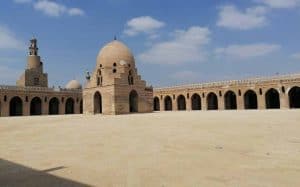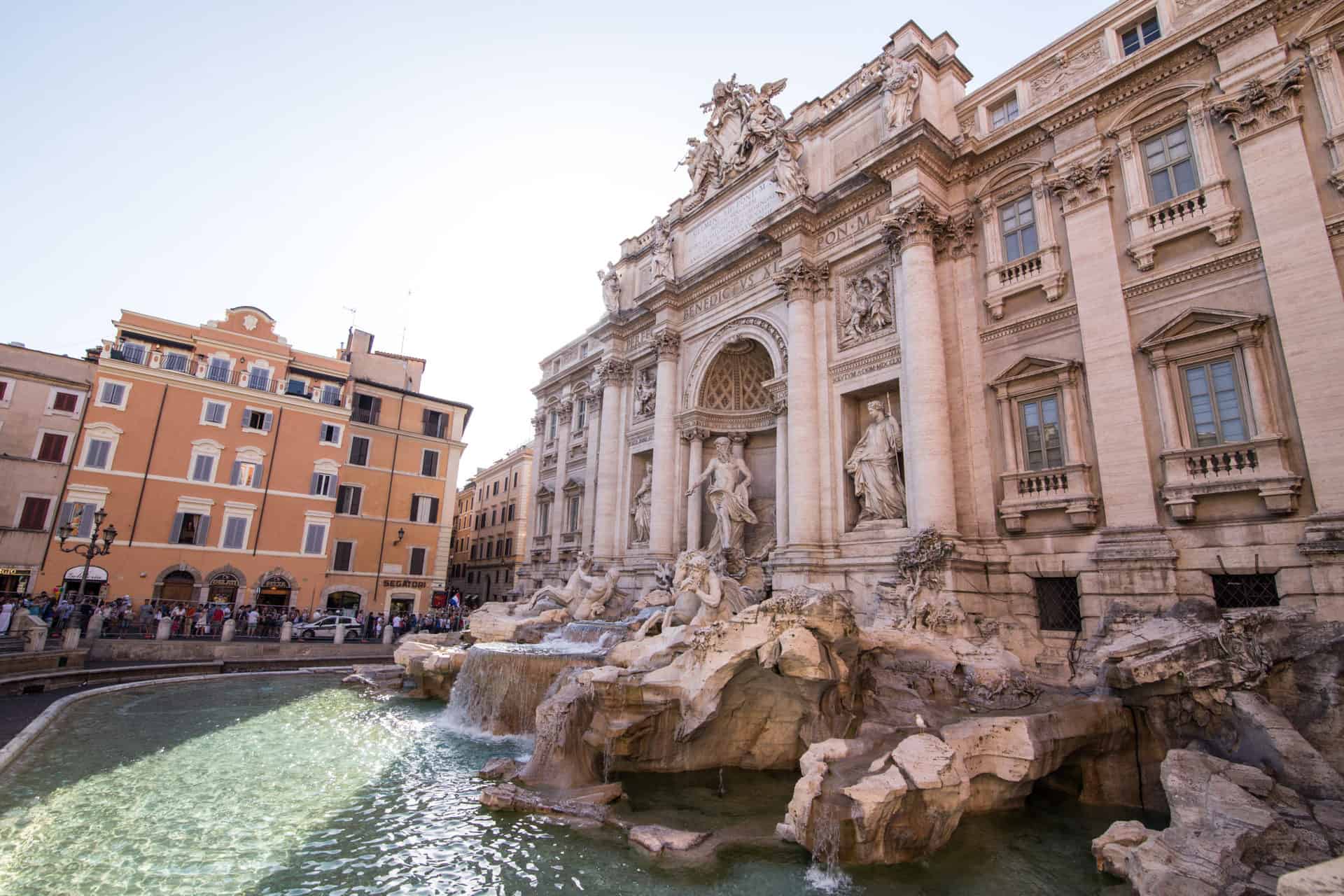Top Attractions in Rome, Italy
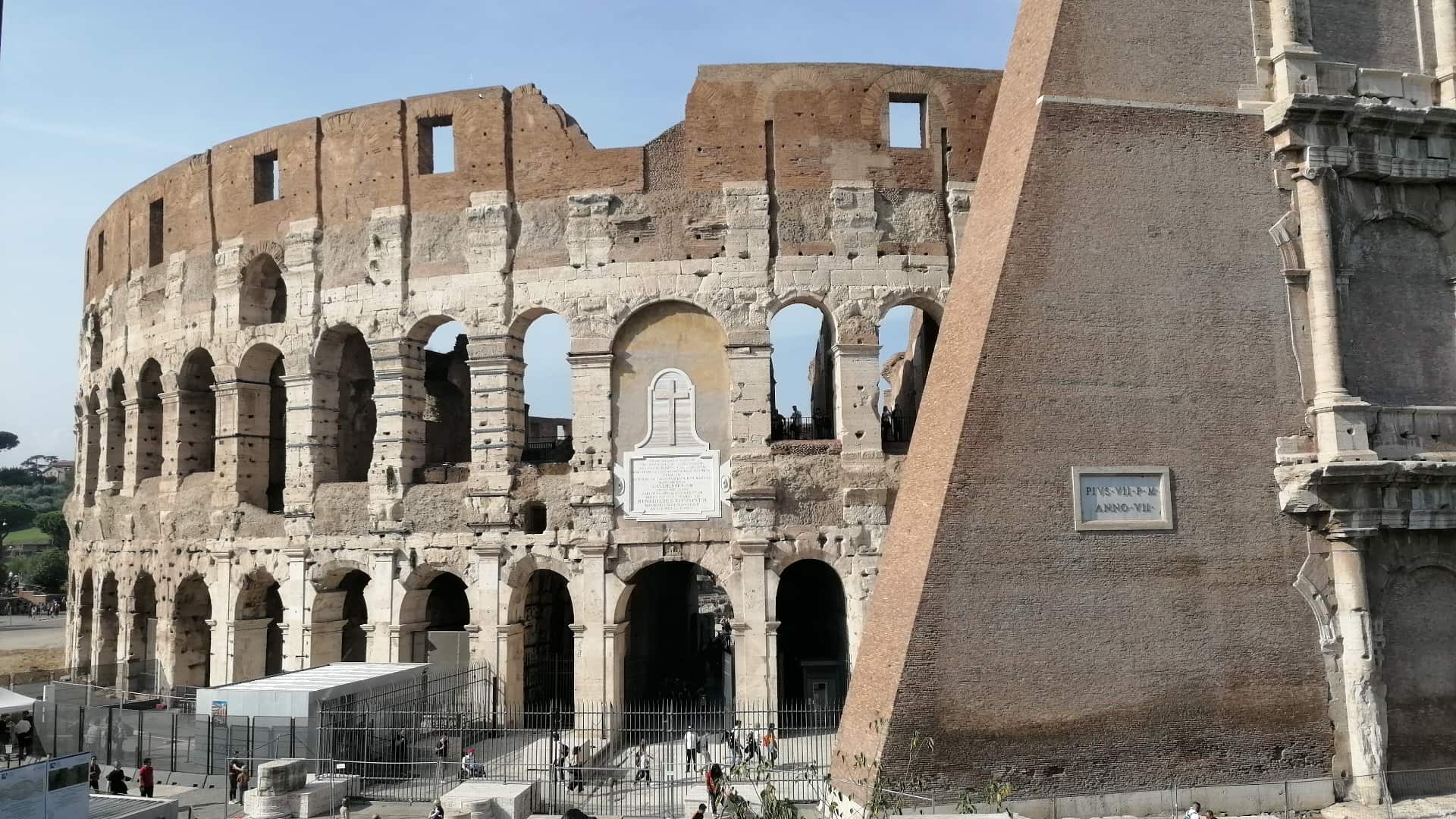
Updated On: May 04, 2024 by Dina Essawy
One of the most visited destinations worldwide, Rome, Italy, is a tourist hub with abundant natural landscapes and beautiful churches, museums, squares, and attractions.
Millions of tourists visit the main attractions in Rome each year, enriching the city’s economy and revitalizing its tourism industry. It is the fourth most crowded city in the European Union and the most populous in Italy. Rome is located along the shores of the Tiber.
History of Rome
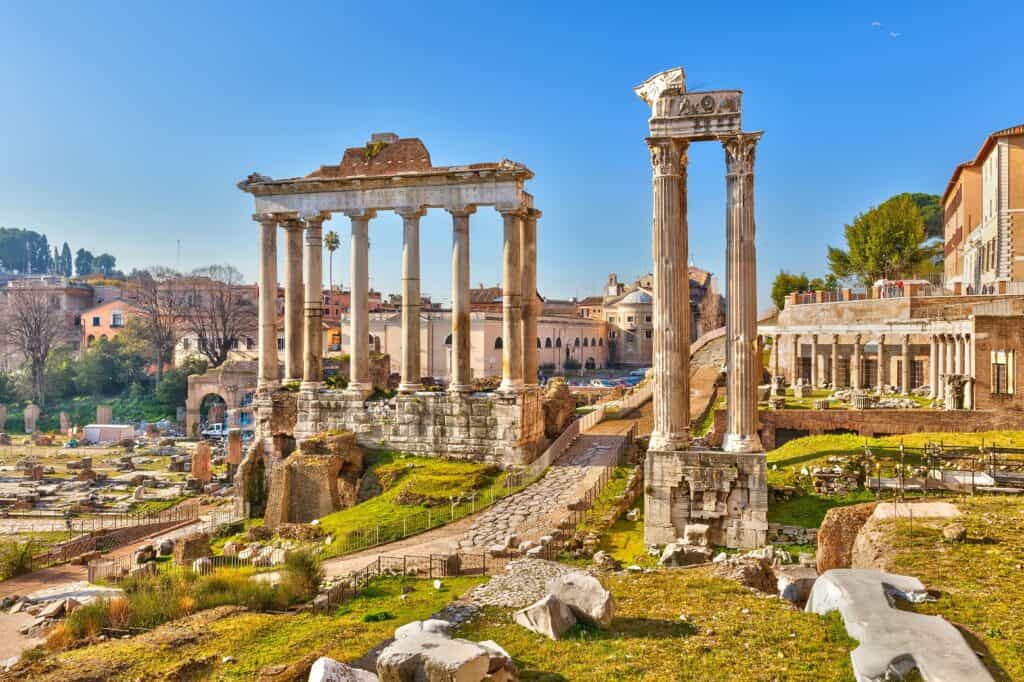
With over 28 centuries of history, Roman mythology dates to the founding of Rome around 753 BC, making it one of the oldest continuously occupied cities in Europe. As the capital of the Roman Kingdom, the Roman Republic and the Roman Empire, Rome is regarded by many as the first-ever Imperial City and metropolis. It was first called The Eternal City by the Roman poet Tibullus in the 1st century BC, and Ovid, Virgil, and Livy also took up the expression. Rome is called “Caput Mundi” (Capital of the World).
In the 15th century, Rome became the first major centre of the Italian Renaissance and launched both the Baroque style and Neoclassicism through famous artists, painters, sculptors, and architects.
Now, UNESCO has listed Rome’s historic centre as a World Heritage Site. In addition to its cast history, Rome has a thriving business centre and a hub for fashion and designer brands. At the same time, the Cinecittà Studios have been the set of many Academy Award-winning movies.
The land that inspired Shakespeare’s Romeo and Juliet will no doubt impress you as well with its long history, tasty cuisine, and variety of shopping options.
If you’re thinking of heading there soon but unsure where to go or how to plan your trip, we’re here to help! Here’s a quick list of Rome’s best sites and activities.
Hop on Hop off Bus and Explore the Entire City of Rome in a Day!
One of the best ways of getting around the city, if you’re looking for a well-rounded tour of Rome’s top attractions, is the Hop on Hop off Bus. The bus tickets are available at multiple booths on almost every street around the city. You can pick a one-day, two-day or three-day ticket to enjoy as many attractions as you can since you can hop off the bus at any of its stops to explore for as long as you like and then hop back on to head to the next attraction on the map (hence the name of the bus).
Among the attractions included in the trip (depending on where you start the tour) are Basilica Santa Maria Maggiore, Colosseum, Circus Maximus, Piazza Venezia, Vatican, Spanish Steps, Trevi Fountain, Porta San Sebastiano, Catacombs and Church of San Sebastiano, Caffarella Park, Domine Quo Vadis, Baths of Caracalla.
The buses also have free Wi-Fi and recorded commentary in 9 different languages through headphones distributed to passengers for free.
The full regular tour takes around one hour and forty minutes if you stay on the bus during the whole thing. The buses work around the clock from 9 am to 9 pm. Tickets for the one-day tours are 32 Euros for adults and 21 for children. The two-day ticket costs 39 Euros for adults and 25 for children, while the three-day ticket costs 48 Euros for adults and 33 for children. You can also save some money by booking a “family ticket” for two adults and two children that costs 85 for one day, 103 for two days and 129 for three days. The buses also offer walking tours if requested.
We highly recommend this tour if you’re only in Rome for a couple of days, and I’d like to take in as many sites and local attractions as possible in a limited time.
Electric Uber Bike around Rome
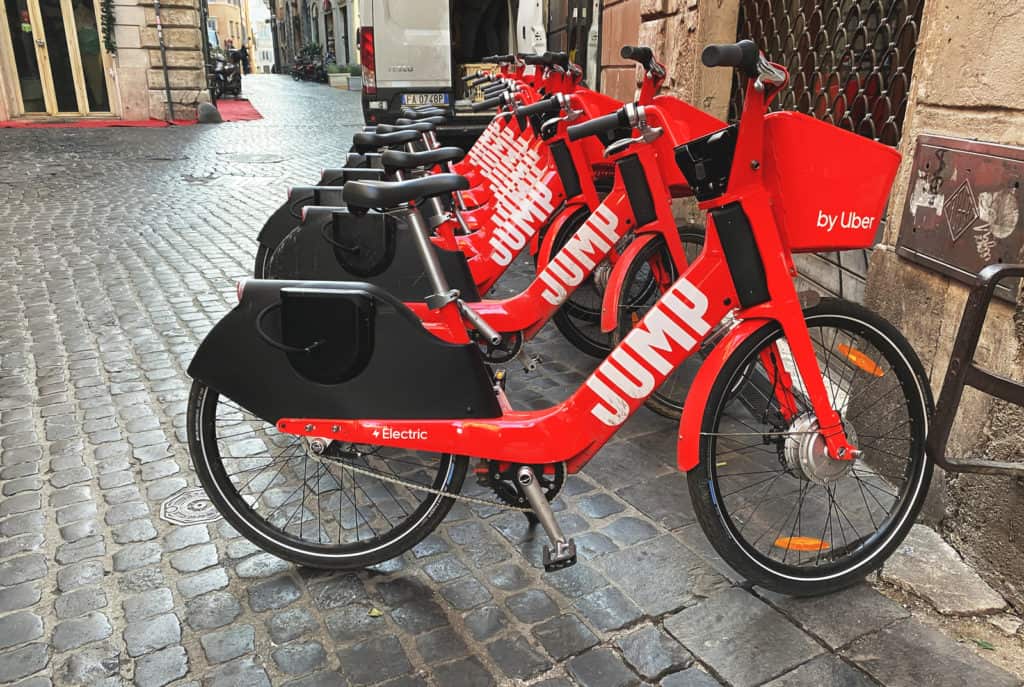
One of the best things to happen since ride-sharing apps became popular is bike-sharing in Rome. Uber Jump was launched in the city in October 2019, allowing visitors and locals to bike easily around the city and park their bikes wherever they want without hassle for the next rider to pick them up.
Uber chose Rome as the first Italian city to debut its bike-sharing app, with 700 bicycles as a start. To use one of the Jump bikes, download the Uber app and locate the nearest bike, which will be unlocked via a PIN. The cost of a Jump is 20 cents per minute in addition to a 50-cent charge to release the bicycle.
This is also a great new alternative for a city famous for its Vespa tours.
Visit Piazza di Spagna and Climb the Spanish Steps in Rome
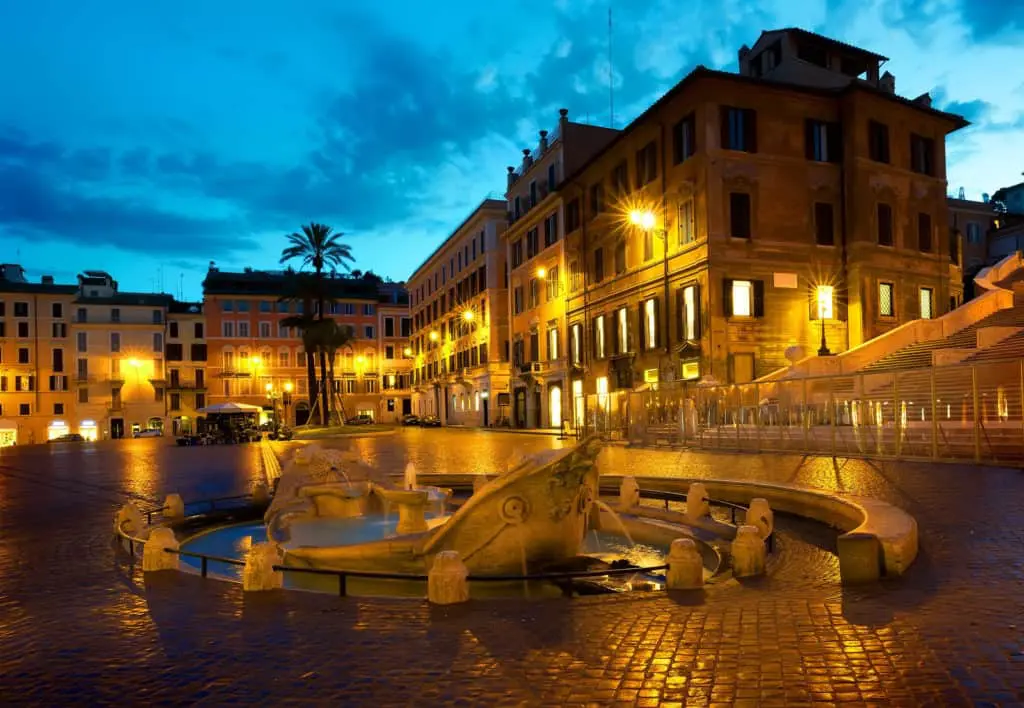
Piazza di Spagna is one of the most famous squares in Rome. It is named after the Palazzo di Spagna, the seat of the Embassy of Spain to the Holy See. The famous Fontana della Barcaccia lies in the middle of the square. It was sculpted by Pietro Bernini and his son Gian Lorenzo Bernini.
Above the square, you can find the famous Spanish Steps and the house of the English poet John Keats, who lived there until his death in 1821. The house has now been transformed into a museum dedicated to him and his friend Percy Bysshe Shelley, showcasing books and memorabilia of English romanticism.
Shop at Via Condotti and Via del Corso to See the Best Brands Rome has to Offer
If you cross Piazza de Spagna and walk straight ahead, you’ll find yourself in Via dei Condotti. Via Condotti is considered to be the most fashionable street in Rome, where you’ll find all the high-end brands you’re looking for, including, but not limited to Dior, Gucci, Valentino, Hermès, Armani, Jimmy Choo, La Perla, Prada, Salvatore Ferragamo, Furla, Burberry, Céline, Dolce & Gabbana, Max Mara, Alberta Ferretti, Trussardi, Buccellati, Bulgari, Damiani, Tod’s, Zegna, Cartier, Bally, Montblanc, Tiffany & Co., Louis Vuitton.
You may also come across Caffé Greco, established in 1760, attracting figures such as Stendhal, Goethe, Byron, Liszt, and Keats.
On the other hand, if you’re looking for great, more affordable brands, you should head to the nearby Via de Corso. The street is in the centre of historical Rome, linking Piazza Venezia and Piazza del Popolo, two of the area’s main attractions.
In the fifteenth century, the road was the racecourse during the Roman Carnival, where it gained its name.
Start at Piazza Venezia and walk down Via del Corso, directly opposite it, to browse the shops like H&M, Boggi Milano, GAP, VANS, Alcott, and many more.
Take Some Great Photos at Piazza Venezia in Rome
Piazza Venezia is the central hub of Rome, Italy, where several thoroughfares intersect, including the Via dei Fori Imperiali and the Via del Corso. It was named after the Palazzo Venezia, built by the Venetian Cardinal Pietro Barbo (later Pope Paul II) alongside the church of Saint Mark, the patron saint of Venice. The Palazzo Venezia served as the embassy of the Republic of Venice in Rome.
The site of Italy’s Tomb of the Unknown Soldier is on one side of the Piazza in the Altare della Patria, as part of the Monument to Vittorio Emanuele II, the first king of Italy.
The Via di Fori Imperiali begins at Piazza Venezia and leads past the Roman Forum to the Colosseum.
Piazza Venezia was the location of public speeches by the Italian dictator Mussolini to crowds of his supporters in the 1920s to 1940s.
In 2009, during excavations in the middle of the square to construct the Rome C Metro Line (station Venezia), the remains of Emperor Hadrian’s Athenaeum were unearthed.
The magnificent landmark is a must-visit, no doubt.
Check out the Magnificent Piazza del Popolo
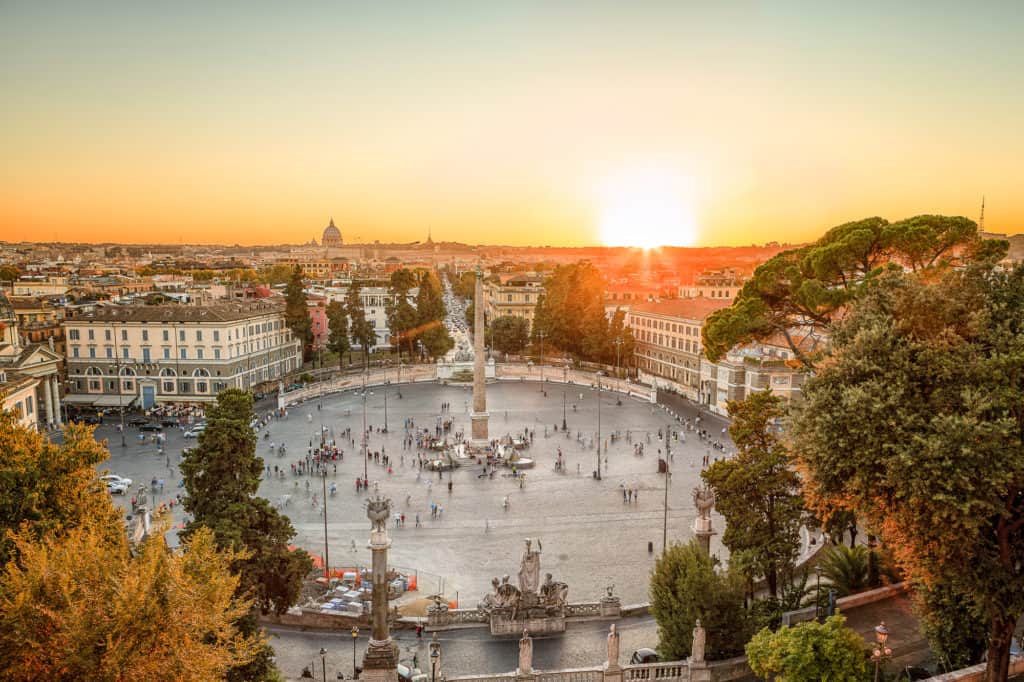
Piazza del Popolo (People’s Square) is a large square in Rome. The church of Santa Maria del Popolo, in the northeast corner of the piazza, is named after it.
The piazza lies inside the northern gate in the Aurelian Walls, a line of city walls built between 271 AD and 275 AD.
For centuries, the Piazza del Popolo was a place for public executions, the last of which took place in 1826. Thankfully, it has overcome its gruesome past and has become one of Rome’s most urbanised sites. In the centre of the Piazza, you can find an Egyptian obelisk of Ramesses II from Heliopolis, Egypt.
Go back in Time at the Capitoline Hill
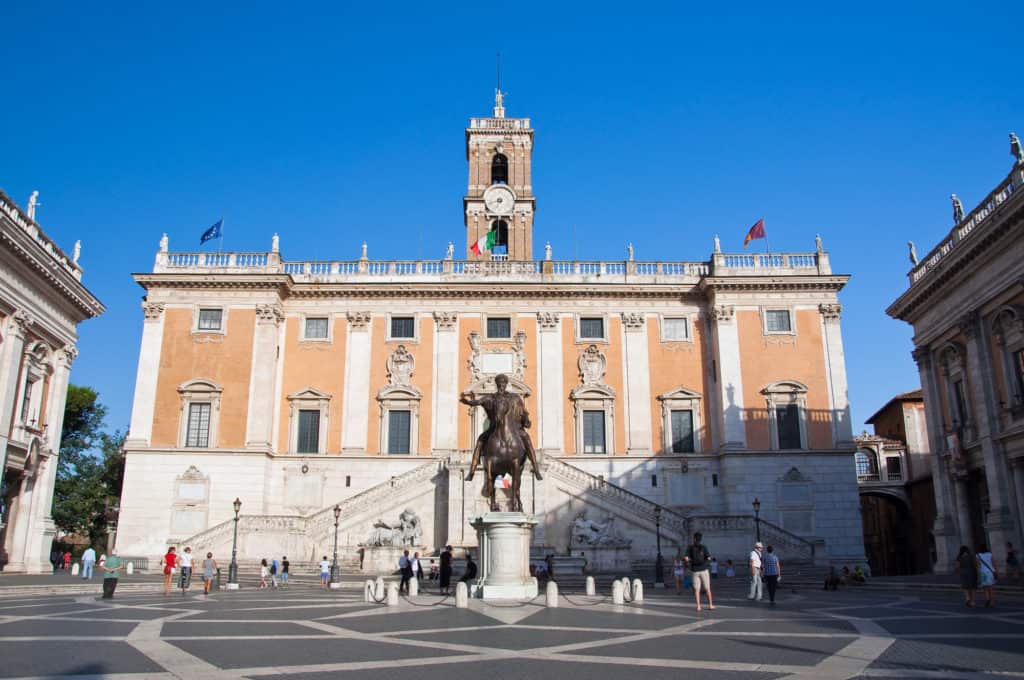
Capitoline Hill is one of the Seven Hills of Rome. The Romans regarded the Capitolium as indestructible and even viewed it as a symbol of eternity.
Capitoline Hill contains a few ancient ground-level ruins, including medieval and Renaissance palaces. It now houses the Capitoline Museums, which surround a piazza designed by Michelangelo.
Capitol Hill in Washington, D.C., is widely assumed to have been named after Capitoline Hill.
Throw a Coin or Three into the Trevi Fountain
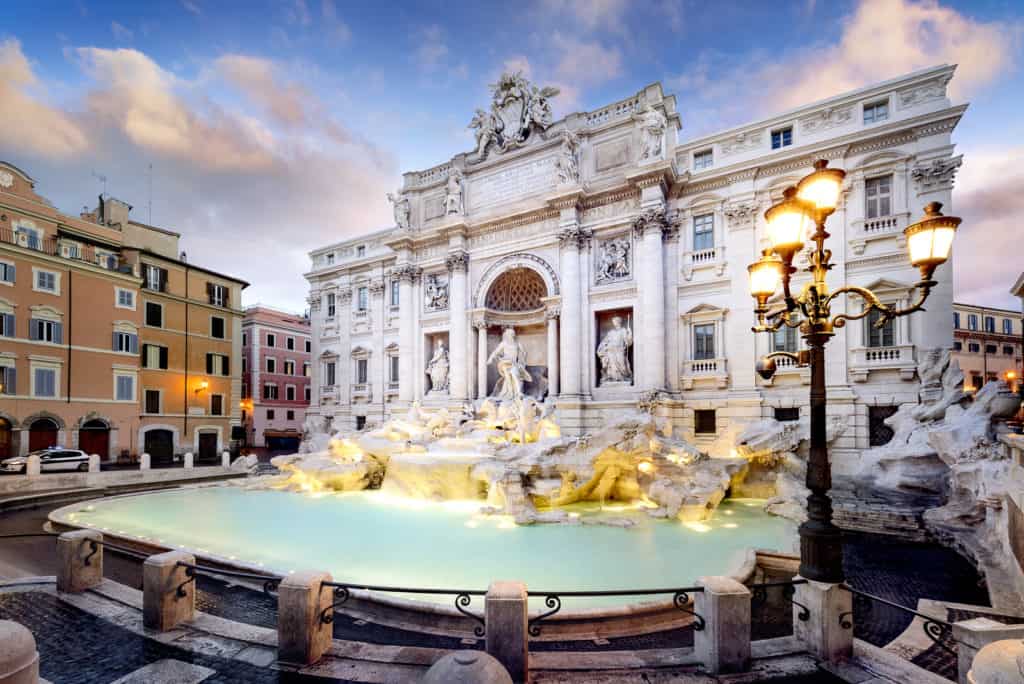
One of the most popular attractions in Italy and even the world, the Trevi Fountain is a stunning sight to behold. The Trevi Fountain gets its name because it lies at the junction of three roads (tre vie): the Three Street Fountain.
The Trevi Fountain was designed by Italian architect Nicola Salvi and completed by Giuseppe Pannini. It is 26.3 meters high and 49.15 meters wide and is the largest Baroque fountain in the city.
Although thousands, maybe even millions, of people throw coins into the Trevi Fountain each year, perhaps few of them know that the coins are purportedly meant to be thrown using the right hand over the left shoulder. According to legend, throwing one coin means you’ll return to Rome, tossing two coins means you’ll also fall in love, and tossing three coins means you’ll return, find love, and get married.
An estimated 3,000 euros are thrown into the fountain each day, and in 2016, an estimated €1.4 million was thrown into the fountain.
The Fountain has appeared in several renowned films, including Roman Holiday, Federico Fellini’s La Dolce Vita, Three Coins in the Fountain, The Lizzie McGuire Movie, and Sabrina Goes to Rome. There is a replica of the Trevi Fountain in Walt Disney World as well.
In 1996, the fountain was turned off and draped in black crepe to honour actor Marcello Mastroianni, the star of La Dolce Vita, after his death. The film is known to have contributed to the Trevi Fountain’s ever-growing fame.
Roman Forum
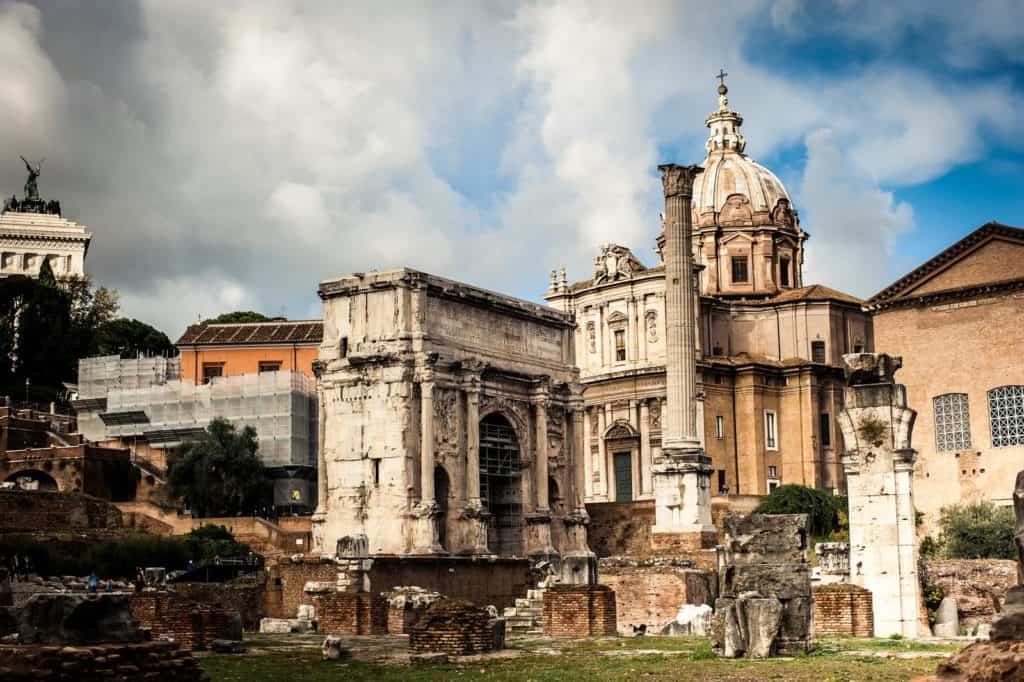
The Roman Forum is a rectangular forum at the centre of Rome. Initially, it was a marketplace referred to as the Forum Magnum.
The Roman Forum hosted many day-to-day activities in ancient Rome, such as victory processions and elections, public speeches, criminal trials, and gladiatorial matches. You can also find statues and monuments commemorating great men from the city’s history. Located between the Palatine and Capitoline Hills, the Forum today contains ruins of archaeological excavations, attracting 4.5 million or more visitors every year.
The Temple of Saturn is one of the more significant and oldest buildings in the Roman Forum. Built around 497 BC, eight columns are all that is left of the illustrious temple. Aside from its religious purposes, the temple also functioned as a bank for Roman Society.
Animal sacrifices and rituals were done in front of the temple to bring good fortune to those entering the temple.
Walk around Circus Maximus
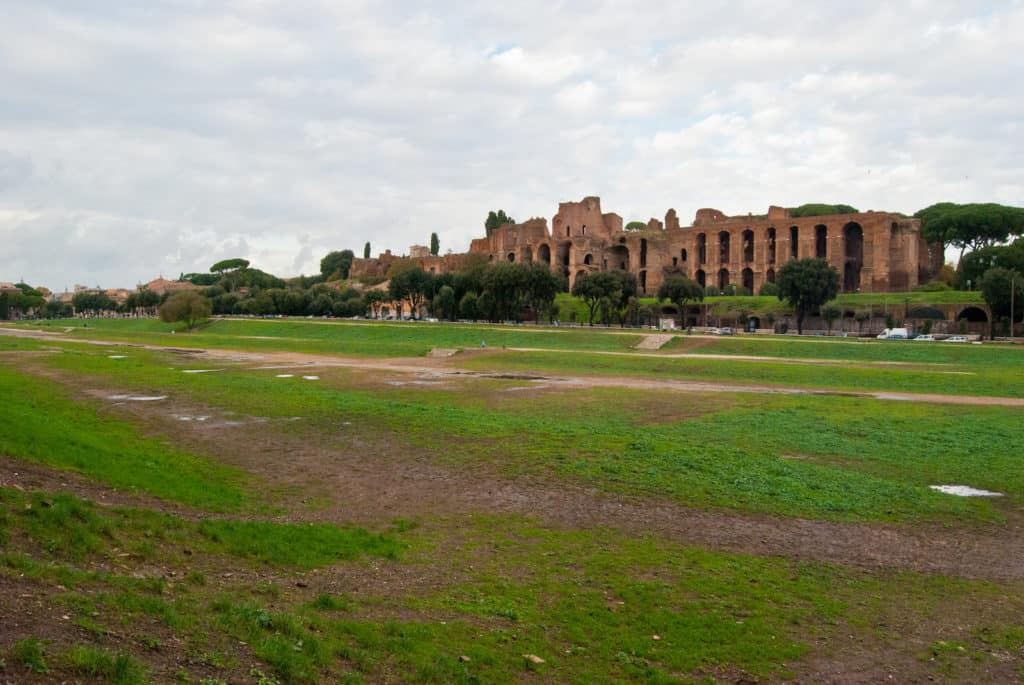
The Circus Maximus is an ancient Roman chariot-racing stadium and mass entertainment venue in the valley between the Aventine and Palatine Hills. It was the first and largest stadium in ancient Rome, easily accommodating over 150,000 spectators. It is now used as a public park.
If the weather permits it, you can walk around the park and enjoy the vast landscapes.
Tour the Majestic Colosseum
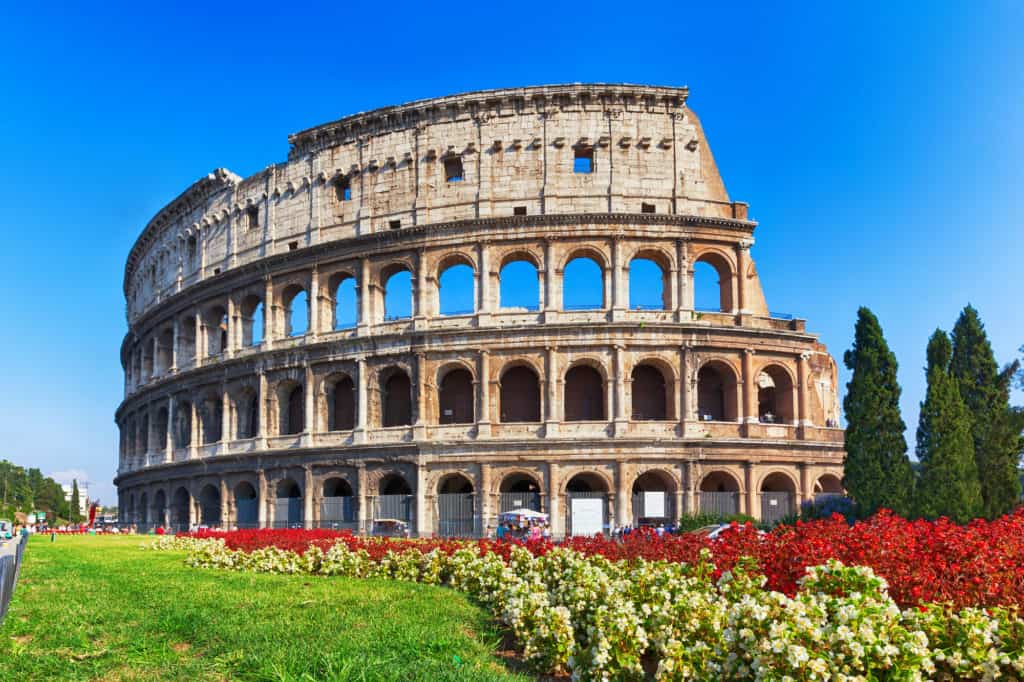
Its real name is “Flavian Amphitheater.” This beautiful building was begun during the reign of Emperor Vespasian in 72 A.D. and finished under his son Titus in 80 A.D. The amphitheatre could contain more than 50,000 to 80,000 people. It is composed of 80 arches adorned with Doric, Ionic, and Corinthian columns.
It was used for gladiatorial contests, animal hunts, executions, re-enactments of famous battles, and dramas based on Classical mythology. The building ceased to be used for entertainment in the early medieval era. It was later reused for different purposes, such as housing, workshops, quarters for a religious order, a fortress, a quarry, and a Christian shrine.
Although substantially ruined by earthquakes, thieves, and stone robbers, the Colosseum is still an iconic symbol of Imperial Rome and is listed as one of the New 7 Wonders of the World. It is one of Rome’s most popular tourist attractions and also has links to the Roman Catholic Church, as each Good Friday, the Pope leads a torchlit “Way of the Cross” procession that starts in the area around the Colosseum. In 2018, it was the most popular tourist attraction in the world, with 7.4 million visitors.
The iconic Colosseum has been featured in numerous films, such as Roman Holiday, Demetrius and the Gladiators, 20 Million Miles to Earth, Way of the Dragon, Gladiator (re-created via CGI), The Lizzie McGuire Movie, Jumper, and the animated movie Madagascar 3: Europe’s Most Wanted.
To avoid long queues, consider booking your tickets online and check opening hours as they may differ according to season.
The tickets usually cost € 16.00 and include entry to the Colosseum, the Roman Forum, and the Palatine Hill.
Have Lunch at the Hard Rock Café in Rome
It’s time for a delicious meal at the famous and quite popular Hard Rock Café in Via Vittorio Veneto. Look at the memorabilia from legendary singers and icons hanging on the walls, and browse through their souvenir shop for unique branded clothes and accessories to take home.
Ride a Bike around Villa Borghese
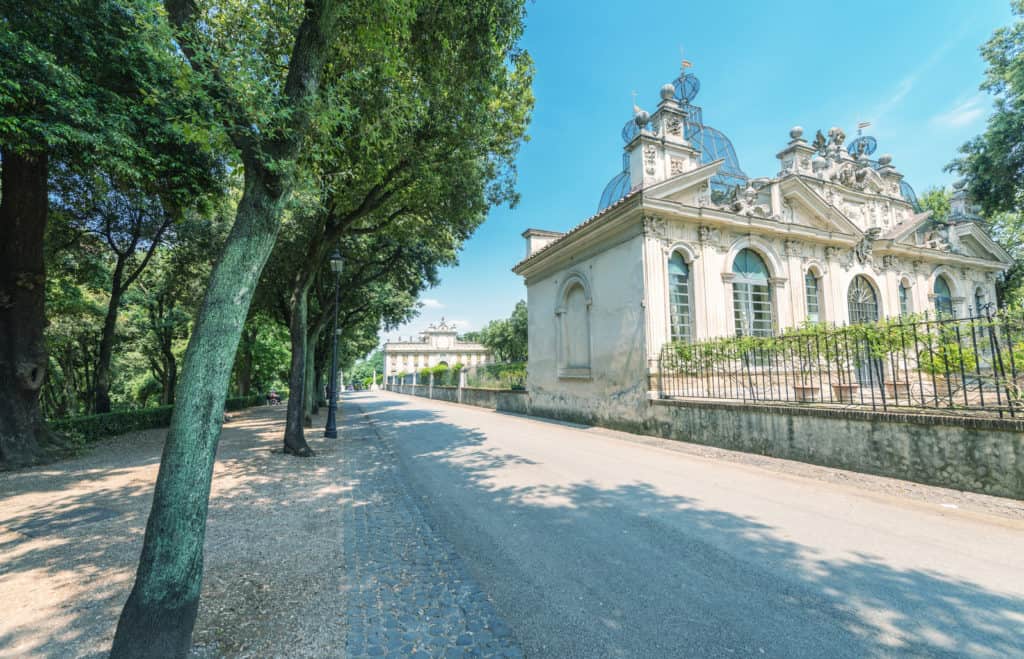
Villa Borghese is a vast landscape garden in Rome, containing a number of buildings, museums, and attractions. The gardens were developed for the Villa Borghese at the edge of Rome. The gardens as they are now were remade in the late 18th century.
The Villa Borghese Gardens officially opened to the public in 1903. The large landscape park contains several villas. You can reach the gardens from several vantage points, including the Spanish Steps and Porte del Popolo by Piazza del Popolo. Pincian Hill, south of the park, offers one of the most incredible views over Rome.
You can enter the gardens for free and then rent a bike to ride around the vast gardens. If you reach the beautiful lake in the centre, you can rent a boat and row around the lake, with the sounds of the local street musicians, who are more often than not present in the area, wafting through the air.
Watch a Performance at the Globe Theater in Rome
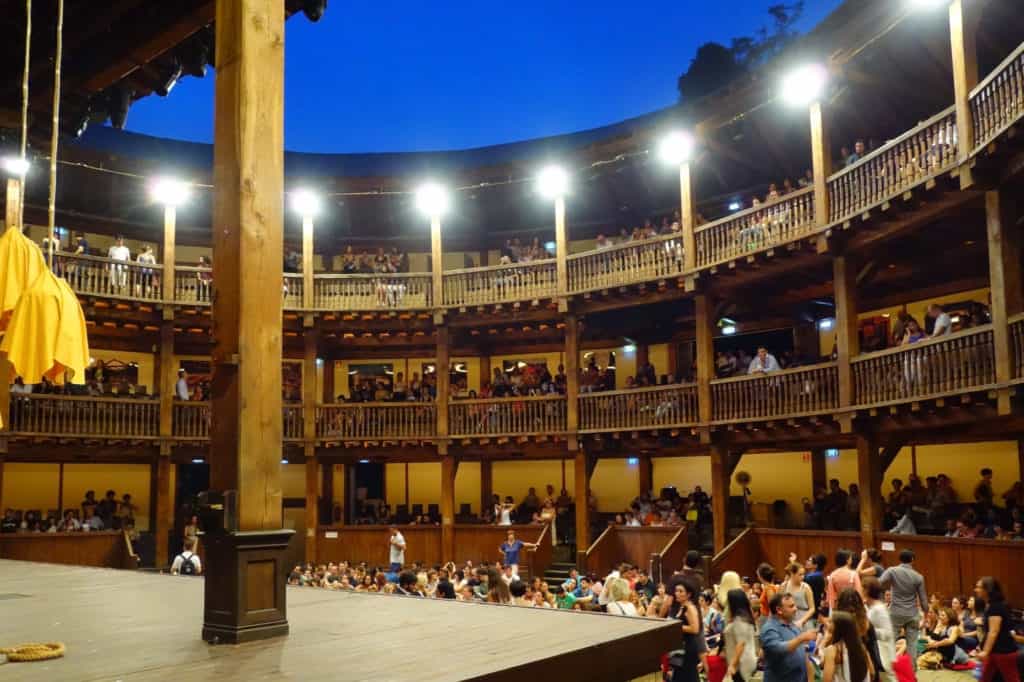
The Silvano Toti Globe Theatre, located inside the Villa Borghese, is a replica of London’s Globe Theatre, where Shakespeare performed his plays. The open-air Elizabethan Theatre presents some of Shakespeare’s works (mostly in Italian) from late June through early October.
Built in 2003 with funding from the Silvano Toti Foundation, the Globe Theatre has three levels that are 100 meters wide and can seat over 1,200 Shakespeare enthusiasts.
Check their schedule to catch a performance while in the city.
Marvel at the Pantheon
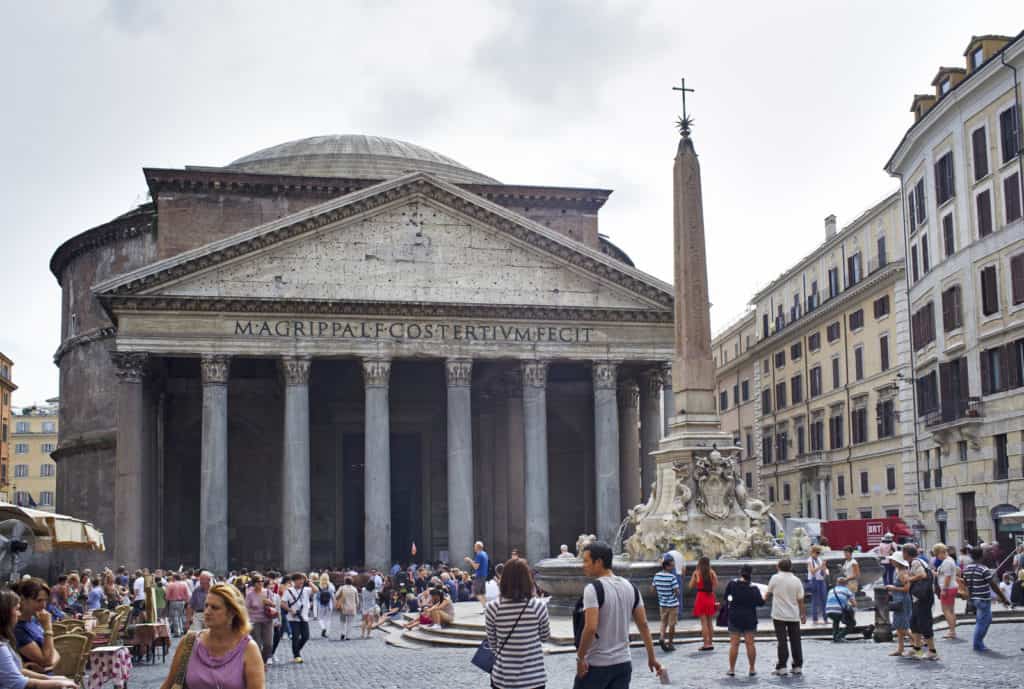
The Pantheon is a former Roman temple, now a church, in Rome. It is one of the best-preserved of all Ancient Roman buildings and has been in continuous use since the 7th century. The Pantheon has been in use as a church dedicated to “St. Mary and the Martyrs” and is visited by millions of people every year.
Two Italian kings are buried in the Pantheon: Vittorio Emanuele II and Umberto I, as well as Umberto’s Queen, Margherita. Weddings are also held there from time to time.
The good news is that entrance to the Pantheon is free.
Take a Risk and Put your Hand in the Mouth of Truth (Bocca della Verità)
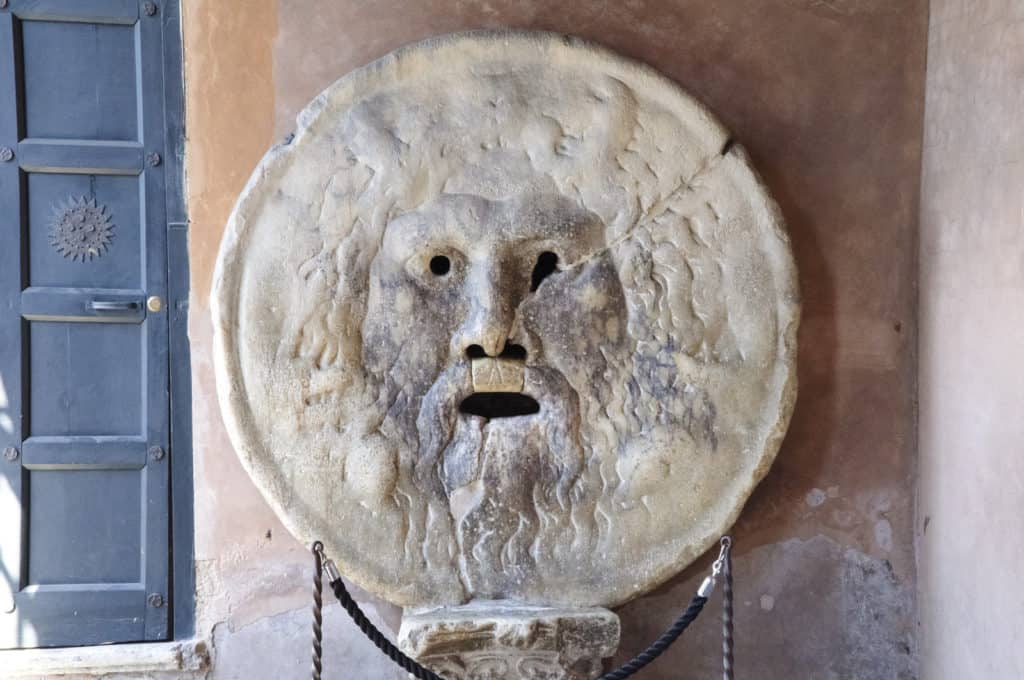
The Mouth of Truth is a marble mask that stands against the left wall of the portico of the Santa Maria in Cosmedin church, at the Piazza della Bocca della Verità.
The façade weighs about 1300 kg and depicts the face of the sea titan god Oceanu with his mouth open. Although historians aren’t quite certain what its original purpose was, it was possibly used as a drain cover in the nearby Temple of Hercules Victor.
In the thirteenth century, the disc was removed from the temple and placed against the wall of the Santa Maria in Cosmedin. In the seventeenth century, it eventually moved to its current location inside the portico of the church.
The Mouth of Truth is also known for its appearance in the 1953 classic film Roman Holiday, starring Audrey Hepburn and Gregory Peck.
According to legend, a husband who mistrusted his wife took her to the Mouth of Truth to test her faithfulness. The woman reacted by pretending to swoon and her lover caught her in his arms. After this, the woman swore before the Mouth of Truth that she had only been in the arms of her husband and of the man that had just caught her.
Many legends have circulated over the years around the Bocca della Verità, but one thing remains certain, it is one of the most interesting and most visited spots in Rome to this day.
The location is open from 9:30 am to 5:50 pm.
View Rome from above from the Castel Sant’Angelo
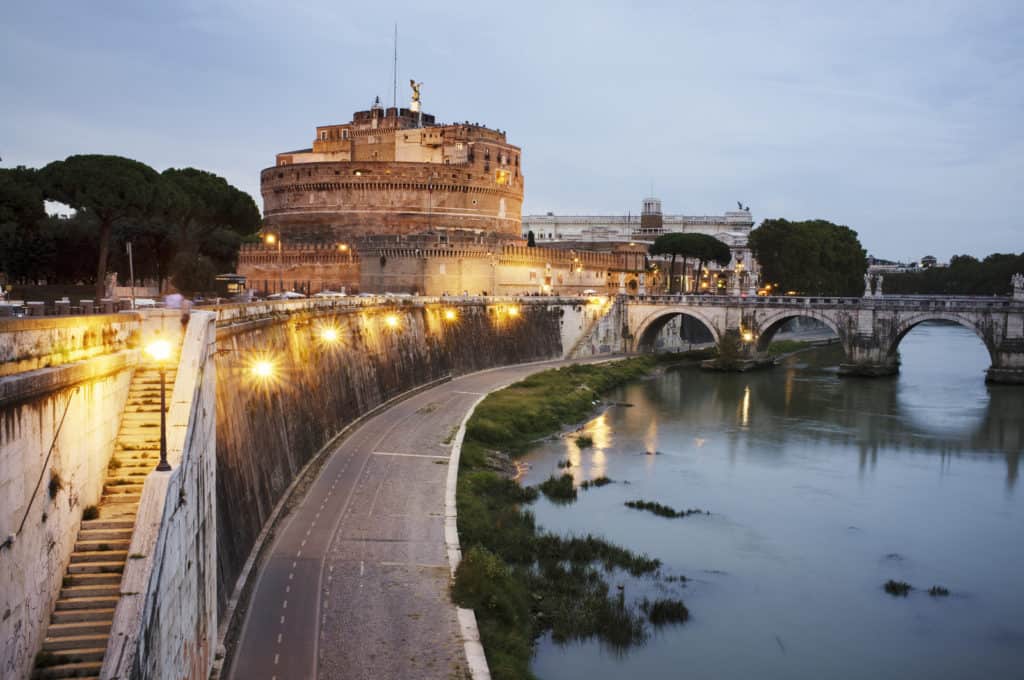
The towering cylindrical castle in Parco Adriano, Rome, provides the best panoramic view of the entire city, which makes sense since it was once the tallest building in Rome. It was initially built by the Roman Emperor Hadrian who intended it to be a mausoleum for himself and his family. The building was later used by the popes as a fortress and castle and is now a museum.
The Castle has five floors, which can be reached through a spiral staircase (so be prepared for some climbing!) each dedicated to certain artefacts and they all provide wonderful views of different sides of the city, including the Tiber and the Vatican.
Among the historical artefacts, you can find inside are the cells in which a number of historical figures were incarcerated, the rooms that functioned as a Papal residence, and an extensive collection of historical weapons and memorabilia.
When you reach the roof, you’ll find a large terrace where you can take stunning photographs of the city from above.
The Castle’s name actually comes from a legend saying that Pope Gregory I saw the Archangel Michael brandishing a sword upward on top of the former mausoleum. The castle was also connected via a secret passage to St. Peter’s Basilica in the Vatican.
The Castle is open from Tuesday to Sunday: 9 am – 7:30 pm and tickets cost €14.
Spend the Day at the Vatican and Sistine Chapel
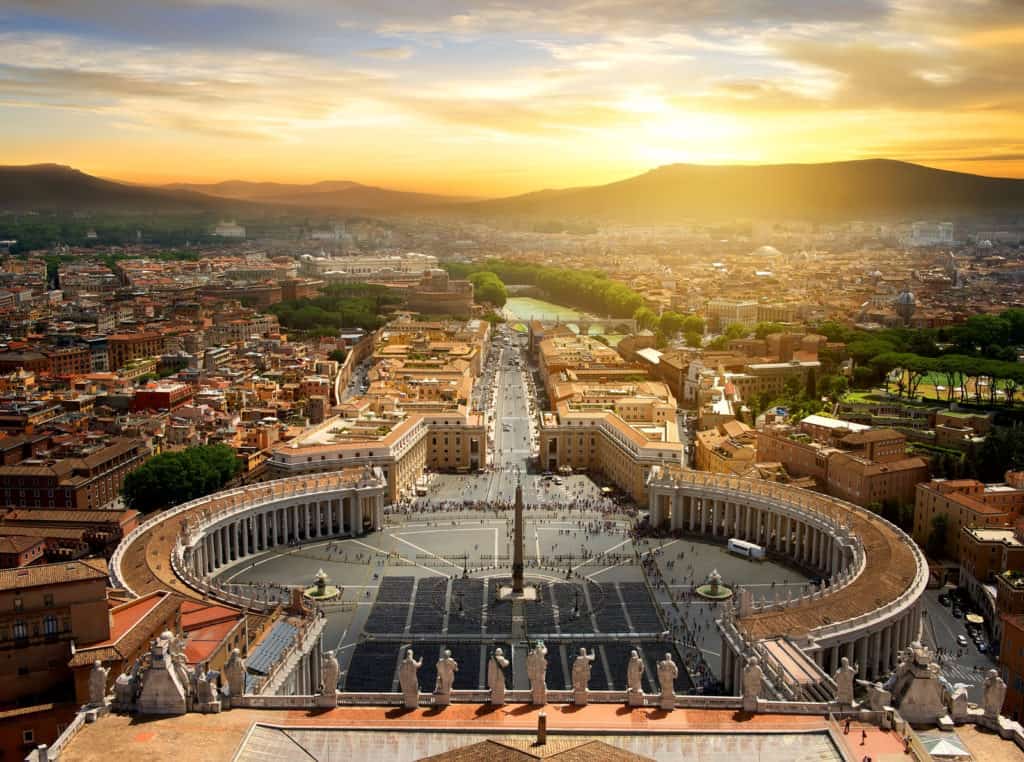
The Vatican City (the smallest country in the world) is an independent country inside Rome, which makes it the only existing example of a country within a city, making Rome the capital of two states.
Vatican City is ruled by the Pope who is the bishop of Rome and head of the Catholic Church. Within the Vatican City are religious and cultural sites, such as St. Peter’s Basilica, the Sistine Chapel, and the Vatican Museums. They feature some of the world’s most famous paintings and sculptures.
The museums encompass everything from Egyptian art to Greek and Roman art, early Christian art, and medieval art divided into the Georgian Egyptian Museum, Chiaramonti Museum, Braccio Nueovo, Pio Clementino Museum, Borgia Apartment (Contemporary Art), the Sistine Chapel, Room of the Aldobrandini Wedding, Christian Museum, Museums of the Vatican Library, Profane Museum, Gregoriano Profano Museum, Pius-Christian Museum, and Pinacoteca.
Originally known as the Cappella Magna (the Great Chapel), the Sistine Chapel is the site of the papal conclave, the process by which a new pope is selected. The Chapel gained its fame due to the exquisite details of its interior, particularly its ceiling and The Last Judgment by Michelangelo who built a scaffold to be able to paint the ceiling himself.
Johann Wolfgang Goethe once said, “Without having seen the Sistine Chapel one can form no appreciable idea of what one man is capable of achieving.”
The Vatican Museums tickets are €17 and they are open from Monday to Saturday: 9 am – 6 pm (final entry at 4 pm)
Every last Sunday of the month: 9 am – 2 pm (final entry 12.30 pm)
One note, the Vatican Museums probably require a whole day to walk through so make sure to prepare ahead. Also, you’ll find restaurants and cafés on location, if you need to rest for a bit in the courtyard, which is also a beautiful sight to behold.
Marvel at St. Peter’s Basilica
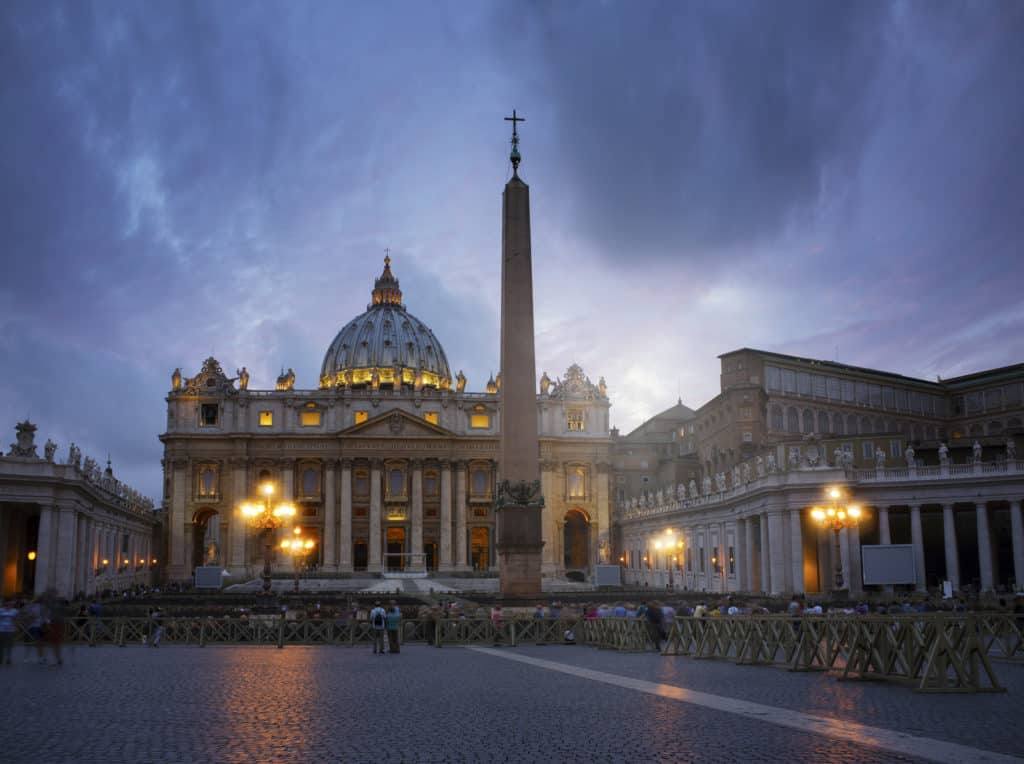
The Papal Basilica of St. Peter in the Vatican is a church built in the Renaissance style located in Vatican City. It was designed by Donato Bramante, Michelangelo, Carlo Maderno, and Gian Lorenzo Bernini, and is considered to be the most renowned work of Renaissance architecture and the largest church in the world.
It is said that the Basilica is the burial site of Saint Peter, chief among Jesus’s apostles and also the first Bishop of Rome (Pope), where his tomb is directly below the high altar of the basilica.
It is the biggest square in Rome (240 meters wide and 340 meters long) with an Egyptian obelisk (25 meters high) in the centre. The cross on top of the obelisk is said to contain the relic of the actual Holy Cross. The beautiful colonnade surrounding the square was created by Bernini, as well as the 140 statues of Saints adorning it.
The entrance to the Basilica is free, but a ticket is required to climb to the top of the Dome (551 steps) for €6 or to take a bit of a shortcut, you can take a lift and then climb 320 steps for €8.
You can book a full tour of the Vatican City, including the Sistine Chapel, Museums and St. Peter’s, for €49.
OR you can walk around the Piazza in front of the Basilica and enjoy the amazing architecture and unique history!
Take a Break from Exploring Rome and Sip a Hot Drink at Piazza Navona
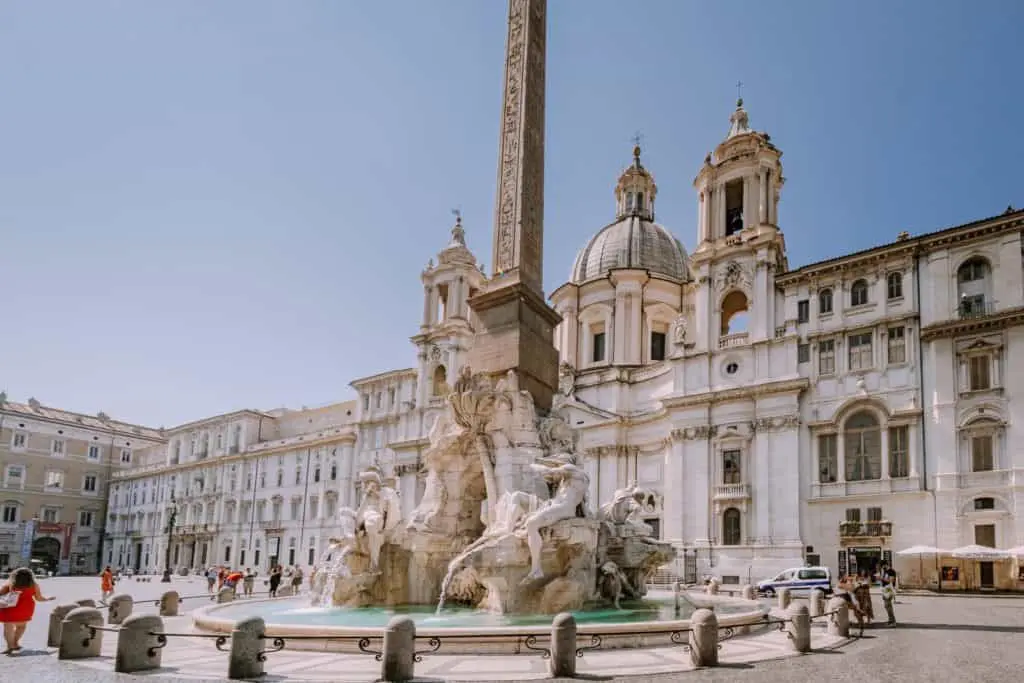
Also called Circo Agonale, where ancient Romans went to watch the games, it is one of Rome’s largest and most beautiful squares. It is located in the area of the ancient Domitian Stadium, with three fountains adorning the square. The most remarkable is the one in the centre, also designed by Bernini and decorated with four statues representing the most important rivers of the continents where Christianity had spread: the Nile, Danube, the Ganges, and Rio de la Plata.
The square is surrounded by restaurants and terraces, and visitors can enjoy performances by street artists, such as magicians and dancers, making it a lively location for locals and tourists alike.
Smell the Roses at Campo de Fiori
Campo de Fiori is a square south of Piazza Navona. Its name means “field of flowers,” which dates back to the Middle Ages, when the area was a meadow.
Executions used to be held publicly in Campo de Fiori. In 1600, the philosopher Giordano Bruno was burnt alive for heresy. In 1889, Ettore Ferrari dedicated a monument to him on the exact spot of his death: The inscription on the base reads A BRUNO – IL SECOLO DA LUI DIVINATO – QUI DOVE IL ROGO ARSE (“To Bruno – the century predicted by him – here where the fire burned”).
Thanks to the prominent buildings surrounding the piazza, such as Palazzo Orsini, the Campo de’ Fiori became a trendy part of Rome frequented by the most influential historical figures.
Due to its growing popularity, new businesses, including workshops, inns, and taverns, were drawn to the area, making this neighbourhood one of the most prosperous in the city.
Since 1869, Campo de’ Fiori has hosted a flower, fruit, and vegetable market every morning from Monday through Saturday.
At night, the piazza becomes alive with its various restaurants, cocktail bars, and terraces.
Visit Basilica Santa Maria Maggiore
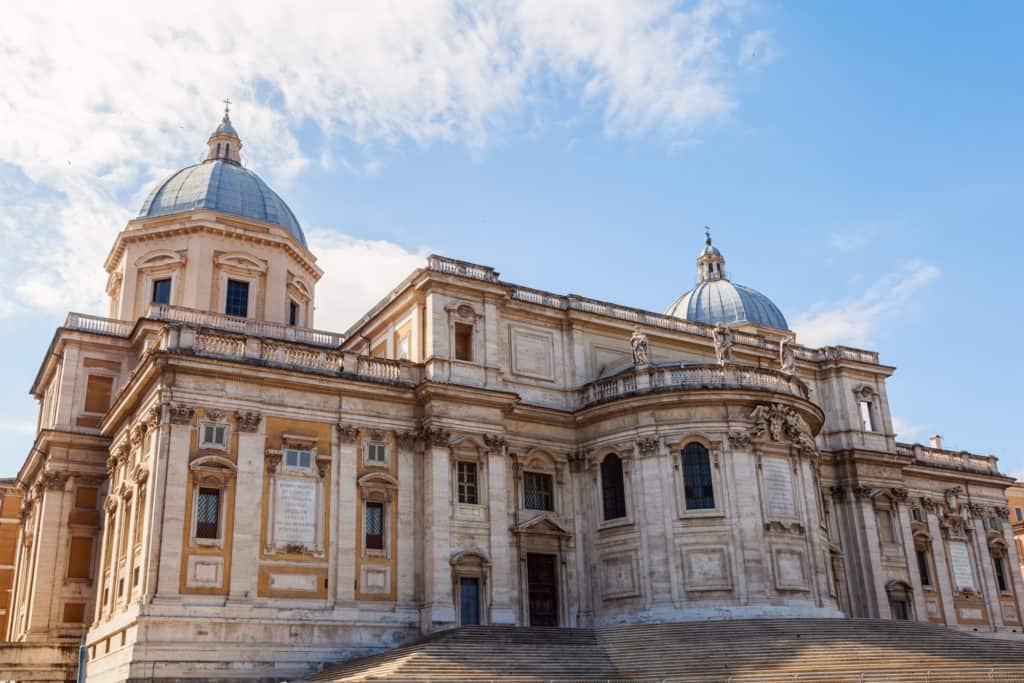
The Basilica di Santa Maria Maggiore is Rome, Italy’s most prominent Catholic Marian church. As a papal basilica, the pope often uses Santa Maria Maggiore. Pope Francis visited the basilica on the day after his election.
The Basilica Santa Maria Maggiore is worth a visit, with its stunning interior and fascinating works of art by renowned artists such as Bernini, Rainaldi, and Pietro Bracci.
The Basilica is open every day from 7 am to 6:30 pm, and the tickets cost only €3 for adults and €2 for students and those over 65.
Take a Trip Down Memory Lane at the Janiculum Hill overlooking Rome
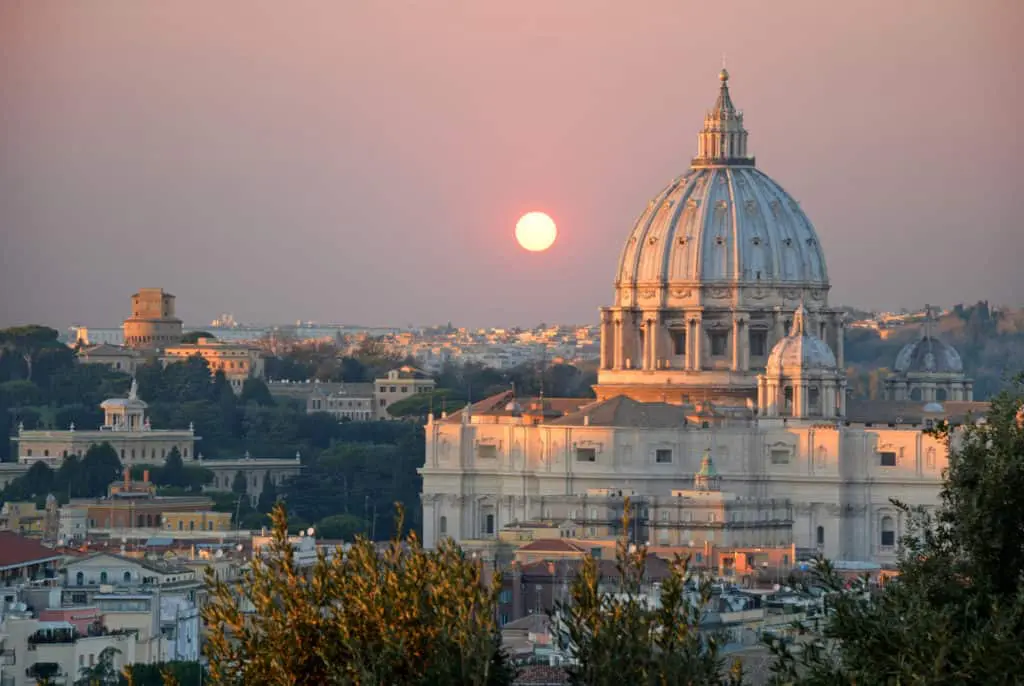
The Janiculum Hill is often considered the “Eighth Hill of Rome”, referring to the seven hills around which Ancient Rome was built.
The Janiculum Hill was the second-highest in Ancient Rome. It was believed to be the centre of the cult of the god Janus, through which it got its name. Because of its stunning location overlooking the city, it is believed that the cult’s priests would stand atop the hill to look for signs from the gods.
Many memorials and statues can be found on the hill, including the Garibaldi Monuments, a famed military leader who contributed to the Italian unification and the creation of the Kingdom of Italy.
You can also find the Independence War Memorial, which honours Italian patriots, and the Manfredi Lighthouse (also known as the Faro Al Gianicolo or the Janiculum Lighthouse), which was built in 1911 as a gift from Italian immigrants in Argentina to Rome.
The Fontana dell’Acqua Paola, also known as Il Fontanone (“The big fountain”), is a monumental fountain on Janiculum Hill in Rome.
The San Pietro in Montorio and Tempietto at the bottom of the hill is part of a convent complex that was built in the late 15th century, which was thought to be the place where St. Peter was crucified.
On the eastern side of Janiculum Hill lies the Orto Botanico, a large botanical garden created in the 19th century. It boasts thousands of plant species, an old greenhouse, a monumental staircase, and two fountains. However, you can’t access the botanical garden from Janiculum Hill. The main entrance lies at the foot of the hill, near the Corsini Palace.
Locals often come to this hill for a walk or a hike to the park at the top, providing some activities for children, including an authentic puppet theatre. Visitors can relax and enjoy the stunning view of the city from above.
You can also walk along the Janiculum Promenade or (Parco degli Eroi – Hero’s Park, commemorating 84 partisans who fought and died protecting the Roman Republic from the French invasion in 1849.
Just be aware that every day since 1904, a cannon round has been fired from Janiculum Hill. It’s blank of course and is intended to help set the time.
Connect the Past and the Present of Rome at the Baths of Caracalla
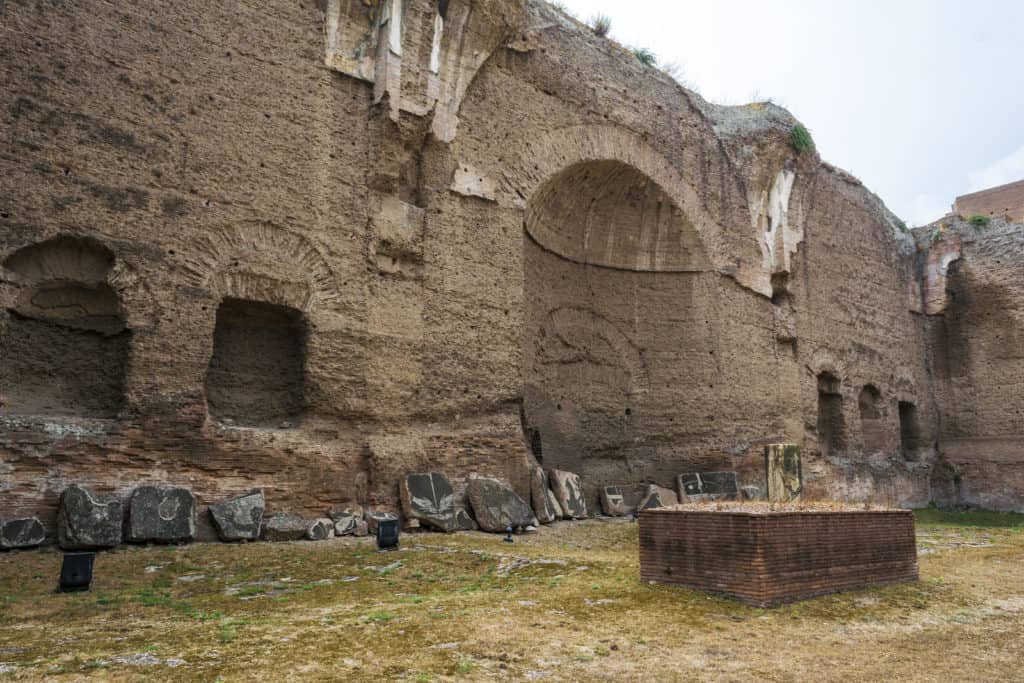
The Baths of Caracalla were the city’s second-largest Roman public baths. They were built around 212 AD and were in operation until the 530s under the direction of Marcus Aurelius Antoninus Augustus, known as Emperor Caracalla. The design of the baths served as inspiration for many modern constructs, such as the original Pennsylvania Station (New York) and Chicago Union Station in the US.
The central part of the complex hosted the Rome Opera Company from 1937 to 1993. In 2001, the venue once again began to host the opera but only using a temporary movable stage outside of the main structure so as not to cause more damage to the antique ruins. Concerts, such as the first Three Tenors concert in 1990, were also held at the venue.
The complex used to host sporting events, including the Rome Grand Prix four times between 1947 and 1951 and the gymnastics event during the.1960 Summer Olympics.
The baths have become a popular tourist attraction and are open to the public for an admission fee. However, access is limited to certain areas to avoid causing additional damage to the mosaic floors.
The site is open from Tuesday to Sunday, 9 am – 6:30 pm and on Monday, 9 am – 2 pm
The tickets cost €8.
Observe the Massiveness Baths of Diocletian
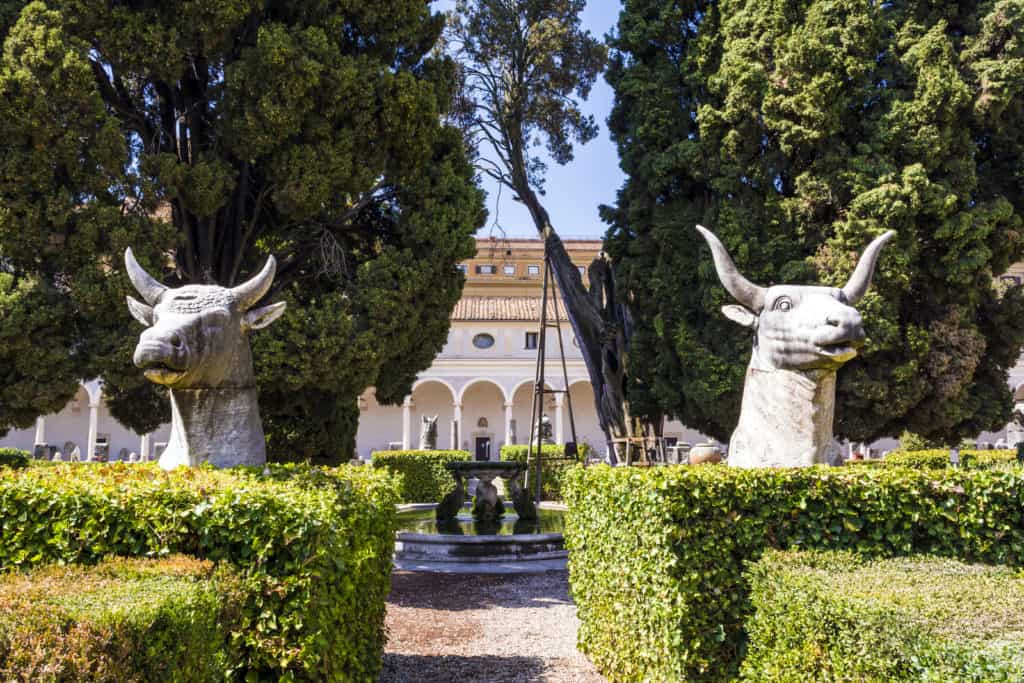
The Baths of Diocletian were the largest imperial public baths in ancient Rome, named after Emperor Diocletian. They had a capacity of over 3,000 people (twice as many as the Baths of Caracalla).
Thousands of Christian slaves died during the construction of the baths. In 1561, Pope Pius IV ordered Michelangelo to build the Basilica of Santa Maria degli Angeli on the remains of the baths to honour all the dead.
Even though little remains of the ruins of the public baths complex, it is still imposing. Visitors can also explore the tombs, which are very well preserved.
Stand Witness to the Past at the Santa Maria degli Angeli
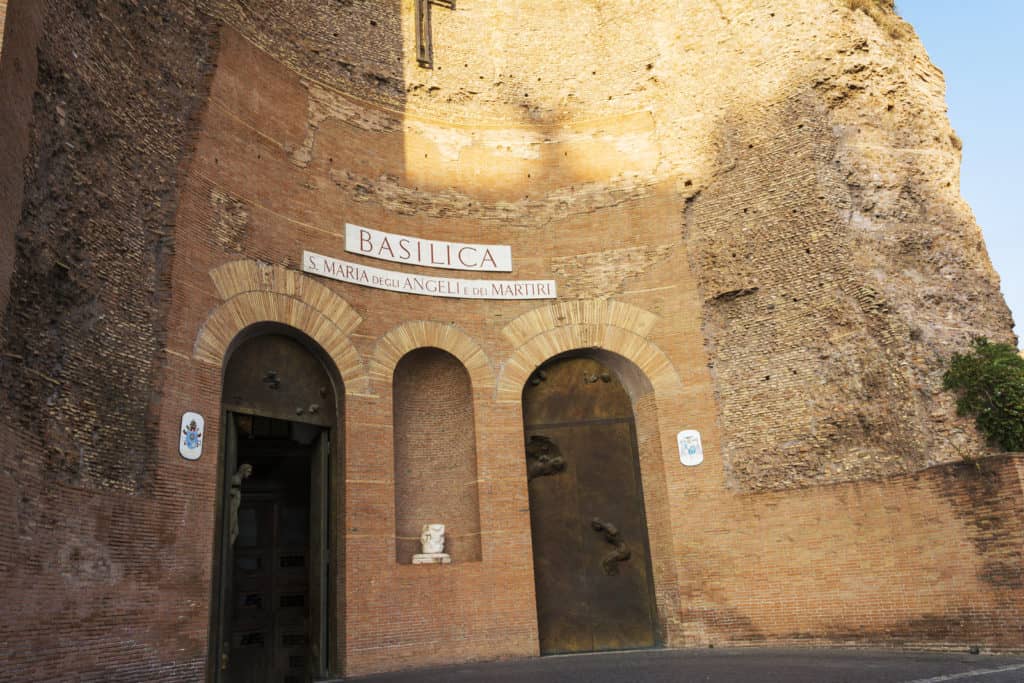
The Basilica of St. Mary of the Angels and the Martyrs is built inside the ruined Roman Baths of Diocletian in the Piazza della Repubblica.
It was built in the 16th century and designed by Michelangelo Buonarroti. The church was used for religious state functions in the Kingdom of Italy.
The basilica is dedicated to the Christian martyrs tasked with constructing the Baths.
Admire Modern Rome at the Piazza della Repubblica
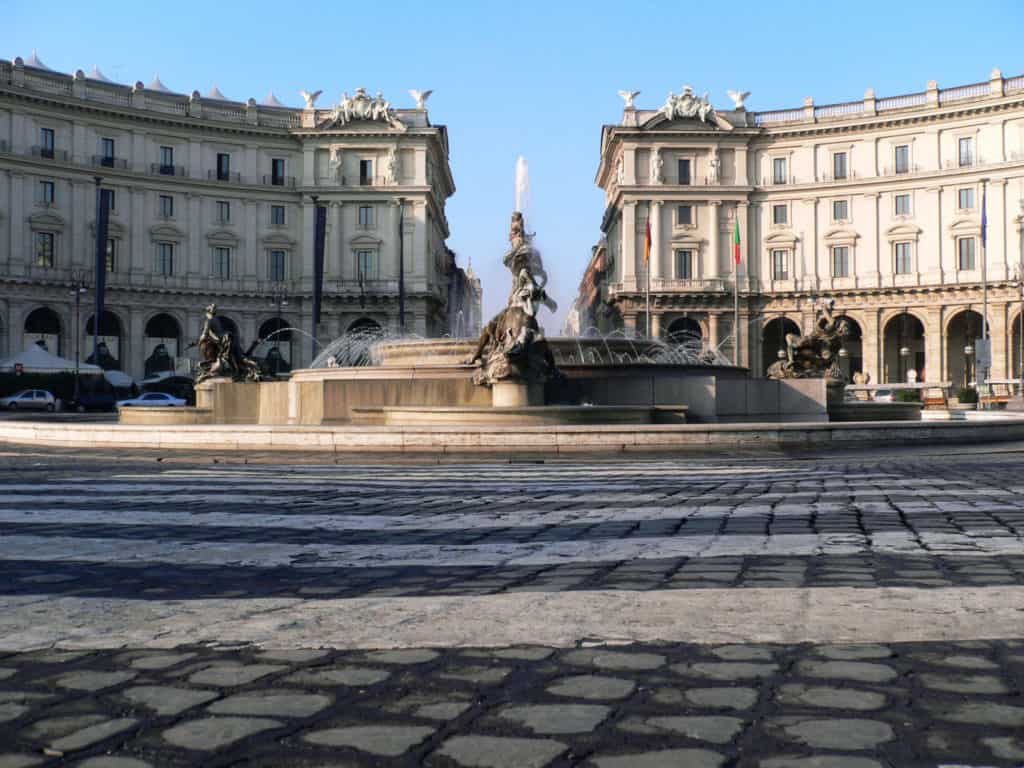
One of Rome’s main squares, Piazza della Republica, lies at the summit of Viminal Hill, next to the Termini station.
The majestic Fontana delle Naiadi lies at the centre of the Piazza della Repubblica. It was constructed between 1870 and 1888 and decorated with four lion sculptures. In 1901, the lions were replaced by the statues of four water nymphs.
Visitors can explore the square before walking to the nearby Baths of Diocletian and visiting the Basilica of Santa Maria degli Angeli. It is also quite close to the Termini Railway station.
Make a Wish Come True at St. Mary’s In Trastevere
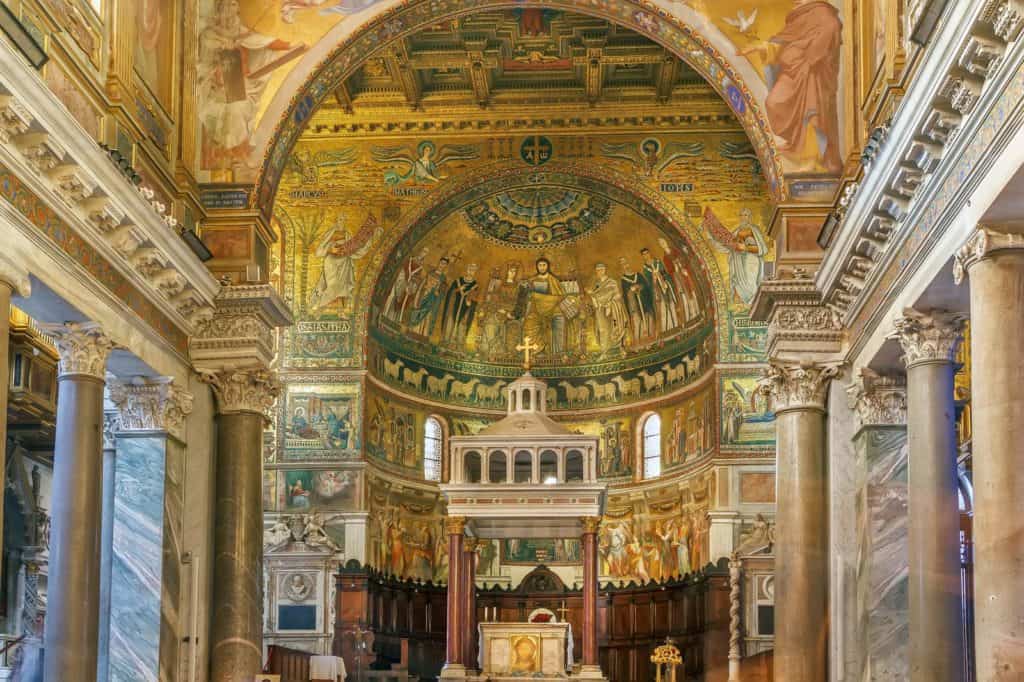
The Basilica of Santa Maria in Trastevere is one of the oldest churches in Rome. The structure of the church dates back to the 340s. The church has large areas of important mosaics from the late 13th century by Pietro Cavallini.
The church’s exterior features stunning golden mosaics, including the 12th-century bell tower. The interior is divided into three naves by columns from the Baths of Caracalla.
At the entrance of the left nave, you’ll find the sculpture of San Antonio, known for granting wishes. Many people leave requests hoping that their wishes might be granted someday.
Entrance to the church is free, and it is open every day from 7:30 am to 9:00 pm.
Make Peace at the Ara Pacis
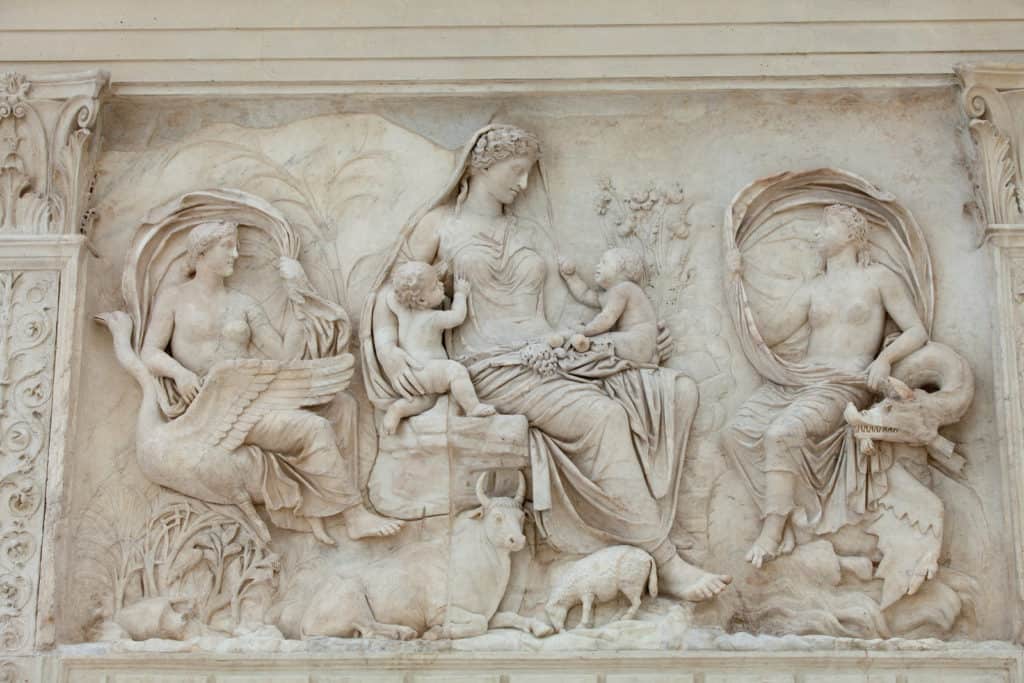
The Ara Pacis is a monument built between 13 and 9 B.C. to celebrate peace in the Mediterranean after Emperor Augustus’s victorious battles in Hispania and Gaul.
It is one of the most significant monuments of Ancient Rome and is preserved inside a glass-walled museum. You can view it from the outside or pay €10.50 to see it up close.
The museum is open Tuesday to Sunday: 9 am – 7 pm.
Leave Hectic Rome behind for the Tiber Island
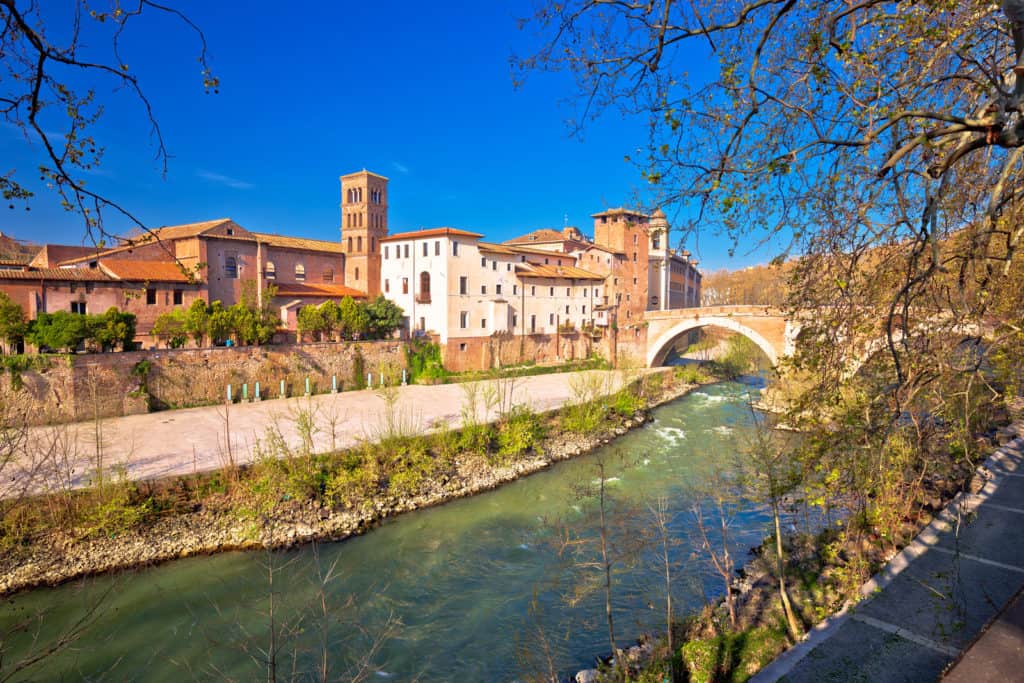
In the middle of the Tiber is a boat-shaped island worth exploring. It was formed in the 6th century BC, and the legend of how it was formed is rather gruesome. After the fall of the tyrant Tarquinius Superbus, the seventh king of Rome and one of its most unpopular rulers of all time, an angry mob threw his body into the river, and it settled on the riverbed, accumulating so much silt that it grew to form Tiber Island.
Another legend says that Romans collected all the wheat that belonged to Tarquinius Superbus and threw it into the Tiber, where it gradually formed the island’s foundation.
Although Tiber Island was considered a dangerous, lawless place many centuries ago, its status changed when a temple for Aesculapius, the Greek god of healing, was constructed in the 3rd century BC.
According to legend, the Roman Senate sent a delegation to Epidauros to find a statue of Aesculapius. The Romans took a snake from the temple of Epidauros and returned to Rome by boat. As they travelled up the Tiber, the snake slithered off the ship and disappeared on Tiber Island. Interpreting this as a sign from the god, the people of Rome decided to build the temple on the island.
In reality, the island was probably chosen because of its isolation from the rest of Rome, protecting citizens from infectious diseases like the plague. However, the legend of the ship and the snake captured the popular imagination to such an extent that Tiber Island was even re-modelled in the 1st century to resemble a ship.
Today, Tiber Island is a haven of peace as you walk around it. In the summer, it hosts the annual Isola del Cinema film festival. It is also featured in the action-adventure video game Assassin’s Creed: Brotherhood.
Catch a Glimpse of the Italian President’s Residence at the Quirinal Palace
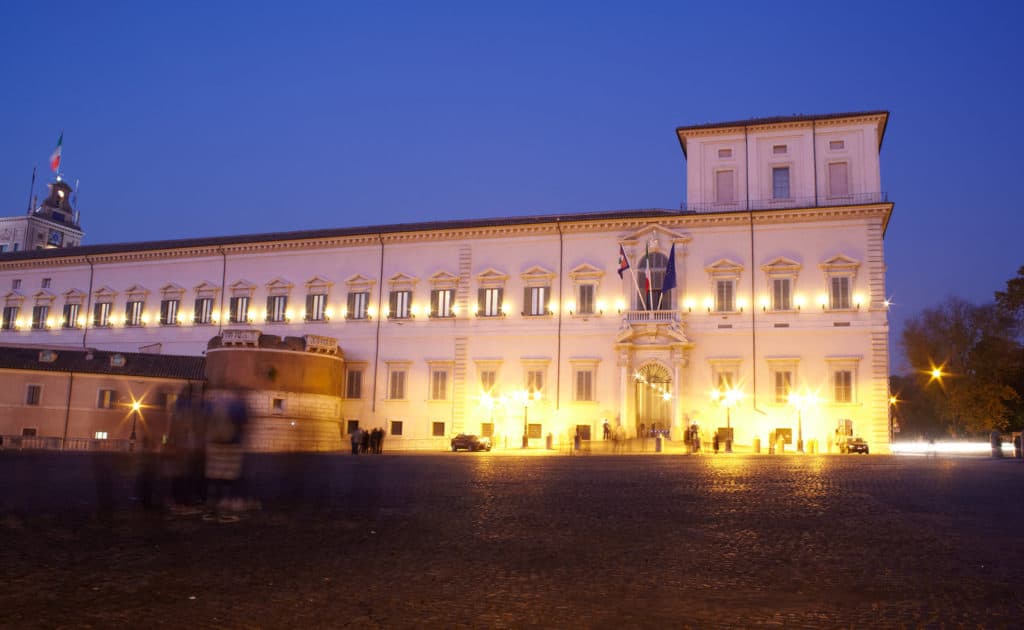
The Quirinal Palace is a historic building in Rome and one of the three official residences of the President of the Italian Republic, along with Villa Rosebery in Naples and Tenuta di Castelporziano in Rome. It is located on Quirinal Hill, the highest of Rome’s seven hills.
The palace’s significance comes from its housing of thirty Popes, four Kings of Italy, and twelve presidents of the Italian Republic.
Napoleon even selected the Quirinal Palace as his residence par excellence as Emperor. However, his permanence never occurred because of the French defeat in 1814 and the subsequent European Restoration.
The extensive palace extends over 110,500 square meters and is the ninth-largest palace in the world.
Celebrate Italian Victories at the Arch of Constantine
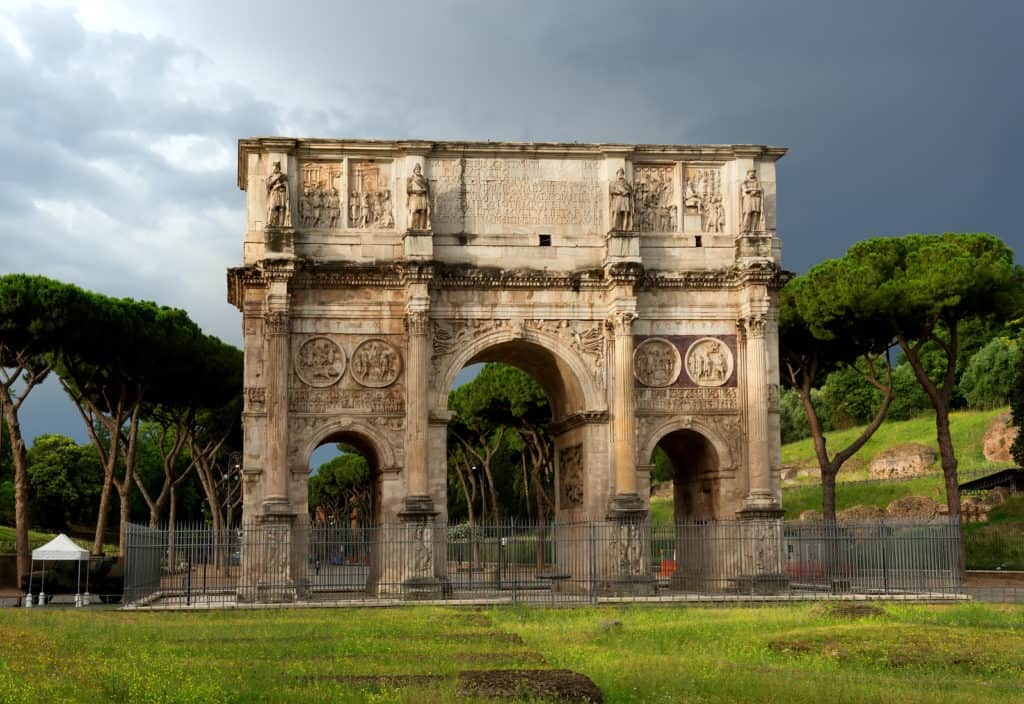
The Arch of Constantine is triumphal in Rome. It is located between the Colosseum and the Palatine Hill, leading to Via Triumphalis, the way the emperors took when they entered the city in triumph. The Roman Senate erected it to commemorate Constantine I’s victory over Maxentius at the Battle of Milvian Bridge in 312. It is the largest Roman triumphal arch.
The inscription on the upper part of the Arch reads: “To the Emperor Caesar Flavius Constantinus, the greatest, pious, and blessed Augustus: because he, inspired by the divine, and by the greatness of his mind, has delivered the state from the tyrant and all of his followers at the same time, with his army and only the force of arms, the Senate and People of Rome have dedicated this arch, decorated with triumphs.”
The Arch of Constantine’s increasing popularity has made it one of the most photographed monuments in Rome today.
Awe at Michelangelo’s Moses at San Pietro in Vincoli (St. Peter in Chains)
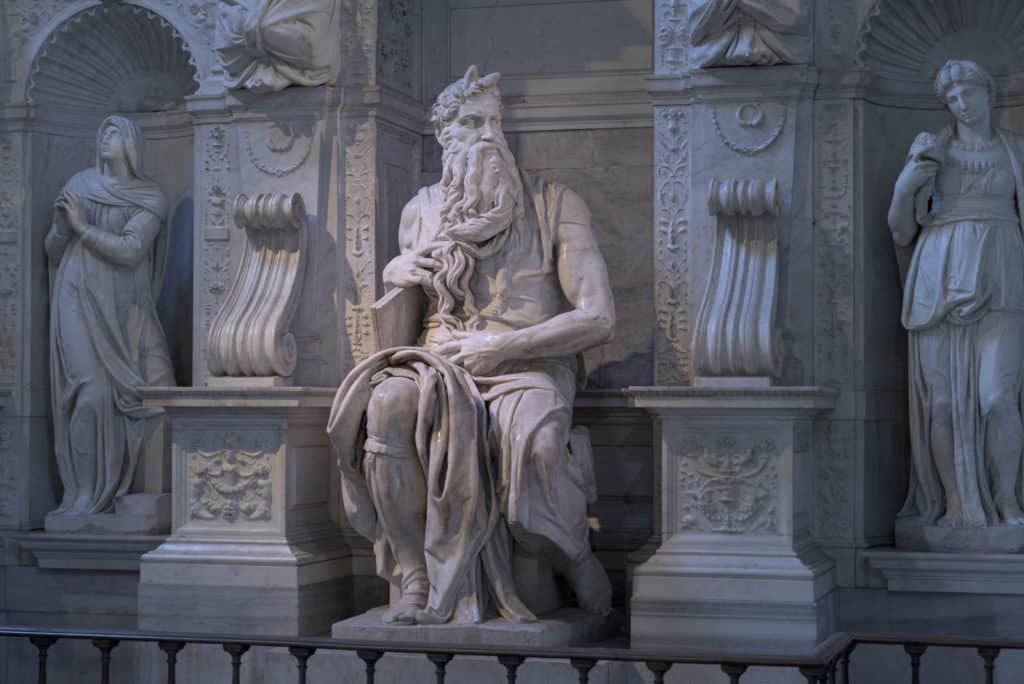
San Pietro in Vincoli is a minor basilica in Rome. It is best known for housing Michelangelo’s statue of Moses, which is part of Pope Julius II’s tomb. The mausoleum is dimly lit until one of the visitors donates and lights up.
The church is located on Oppian Hill near Cavour metro station, a short distance from the Colosseum. It was built in the 5th century to house the relics of Saint Peter’s chains from his imprisonment in Jerusalem.
According to legend, Empress Eudoxia gave Pope Leo I the chains with which Saint Peter had been shackled in Jerusalem as a present, and he commissioned the Basilica of San Pietro in Vincoli to be built to house the relic.
Unlike other basilicas and churches in Rome, the San Pietro in Vincoli Basilica has quite a simply decorated and ornamented interior.
The Basilica is open daily: from 8 am to 12:30 (midday) and 3 pm to 7 pm. Entrance is free of charge.
Enjoy the Ancient Murals at Domus Aurea
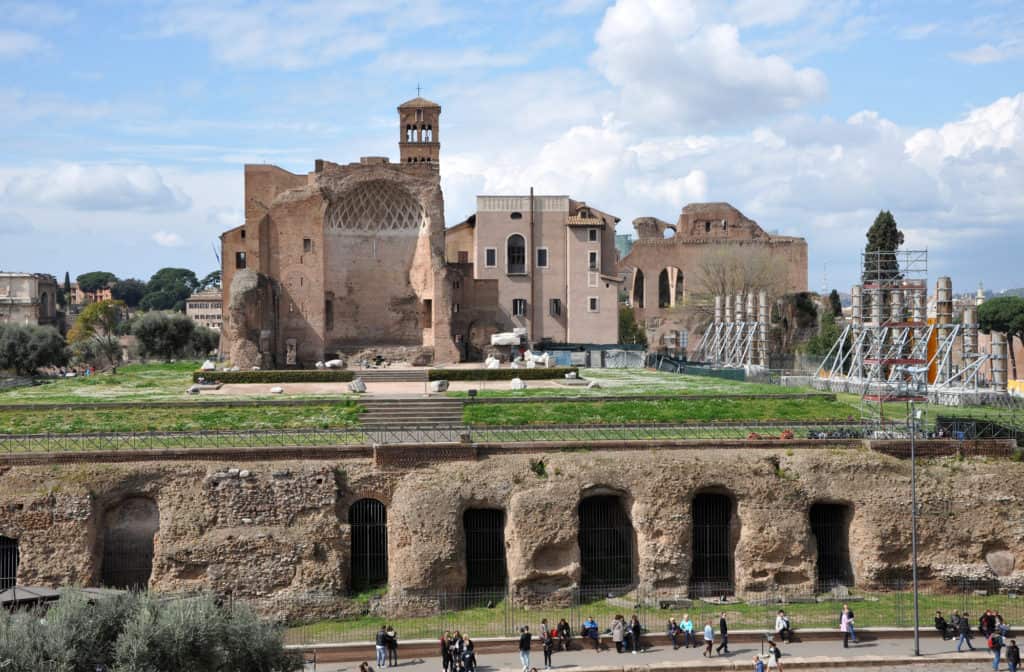
The Domus Aurea (Latin for Golden House) was an extensive palace built by Emperor Nero in the centre of ancient Rome after a large part of the city and the aristocratic villas on the Palatine Hill were destroyed by the great fire in 64 AD.
After Nero’s death, his successor, Vespasian, destroyed the Domus, and decades later, Emperor Trajan used the ruins as the foundation for his bath complex. During the Renaissance in the 15th century, artists like Raphael and Michelangelo managed to sneak underground by rope into the site to study the magnificent murals that are said to have significantly influenced their future masterpieces.
A team of archaeologists was working on the site in early 2019 when they noticed an opening in one of the walls. This led them to a mysterious chamber full of exceptionally well-preserved Roman murals of mythical figures like centaurs, the pagan god Pan, and sphinxes, which led to the room being named “Sala delle Sfinge,” or the “Sphinx Room.”
Currently, the Domus is only accessible if you book a guided tour through them for €20. It is worth visiting the massive complex that, according to historians, was all used for parties, with none of its 300 rooms used as a bedroom or kitchen. It has also been considered the most extravagant construction in the history of Rome due to its massive golden dome and ceilings that were once stocked with semi-precious stones and finished in ivory, precious mosaics, pools and fountains, and an artificial lake. Most of the walls were covered in frescoes, the rooms finished in white marble with shapes that played with light.
Walk through the Ruins of the Baths of Trajan
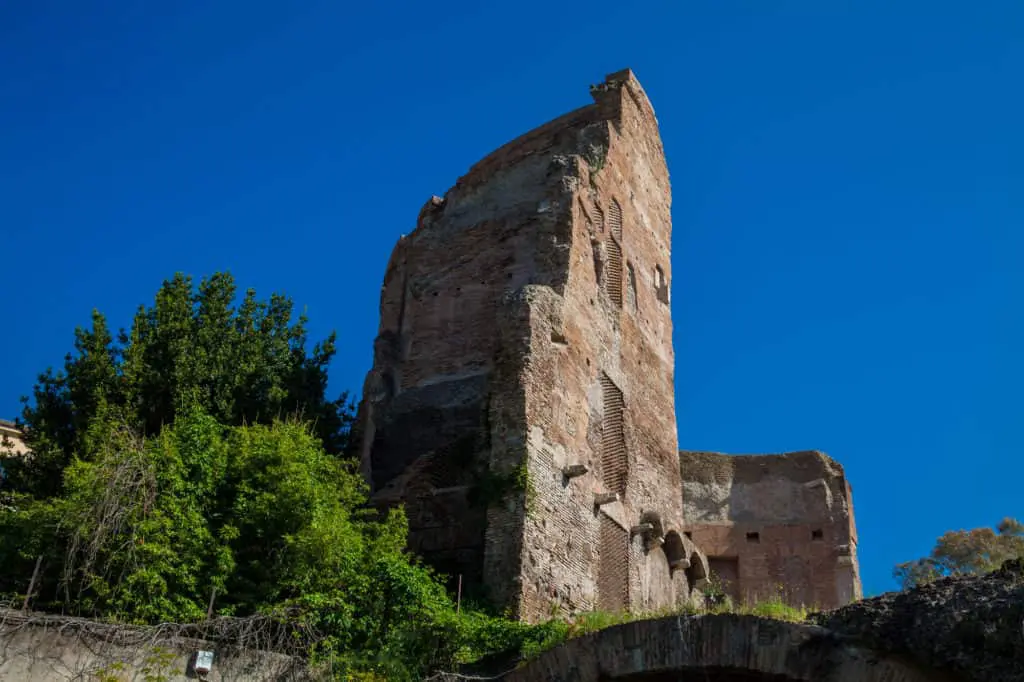
The Baths of Trajan were a massive bathing complex built in ancient Rome starting in 104 AD. The building was commissioned by Emperor Trajan on the southern side of the Oppian Hill, close to the ornate Palace of Nero (Domus Aurea).
The baths were utilized as a recreational and social centre by Roman citizens, both men and women, as late as the early 5th century. From then on, they fell out of use.
Unfortunately, only some ruins of the original complex remain, and they can be found in the park on Oppian Hill.
Cross the Porta Pia
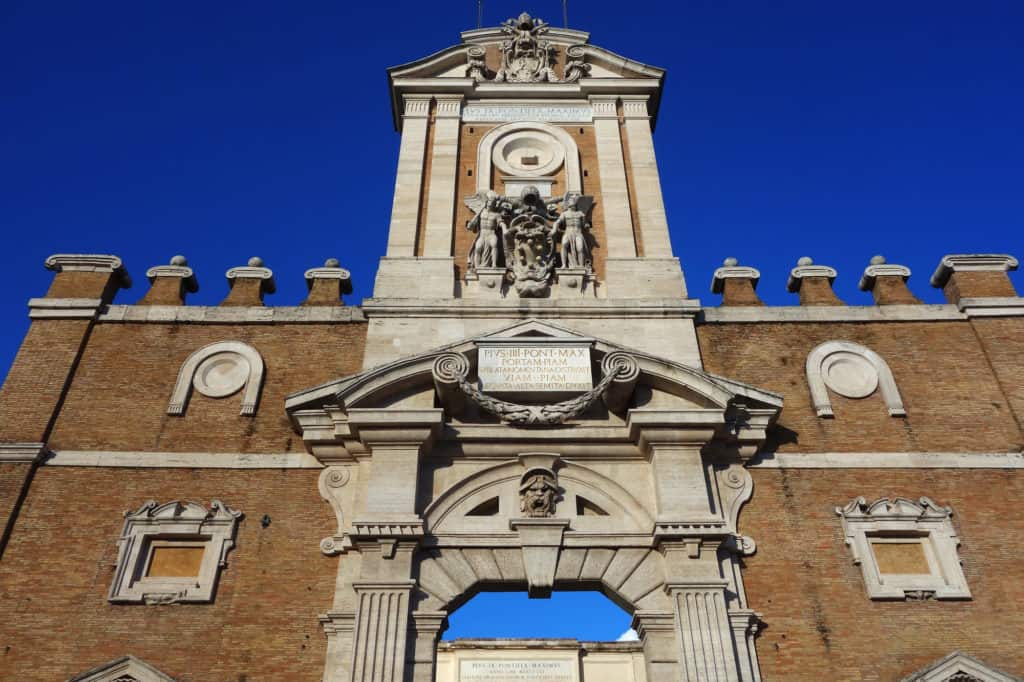
Porta Pia is a gate in the Aurelian Walls of Rome. It is named after Pope Pius IV, who was responsible for its construction. Situated at the end of a modern street, Via Pia, Michelangelo designed it to replace the Porta Nomentana closed up simultaneously. Construction began in 1561 and ended in 1565, after the artist’s death.
Glimpse the Holy Stairs at the Basilica of St. John Lateran
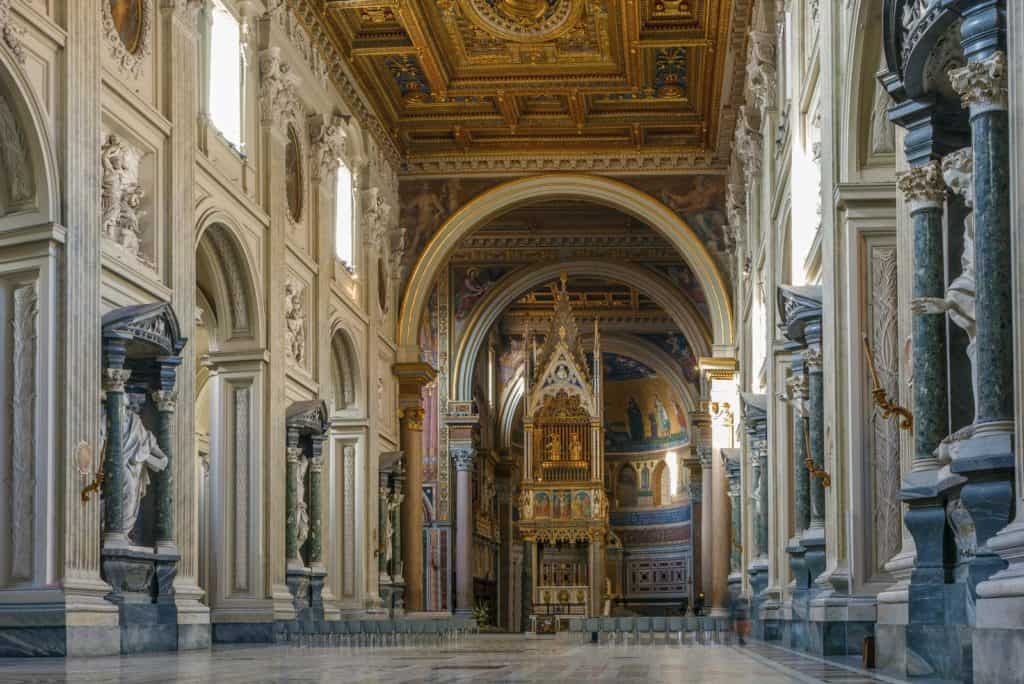
The Basilica was founded during the 4th century in honour of St. John the Baptist and John the Evangelist. It is the Cathedral of Rome and the most important of the four major basilicas.
In the 4th century, the Lateran family’s land was confiscated because one of their members was accused of conspiring against the Emperor. The land was given to the Bishop of Rome to build the first Roman basilica.
The Basilica of St. John proved quite resilient, surviving several fires and an earthquake in 897 while still maintaining its original form.
The Basilica’s interior is magnificent, ornamented with colossal statues, mosaics and murals from the ceiling to the ground.
The Holy Stairs (Scala Santa) is also located near the Basilica. They are renowned because it is believed that Jesus Christ stepped on them during His Passion. They were relocated from Jerusalem to Rome by St Helena in 326.
The Basilica of St. John is open daily from 7:00 a.m. to 6:30 p.m., and entrance is free of charge.
Walk down the Appian Way
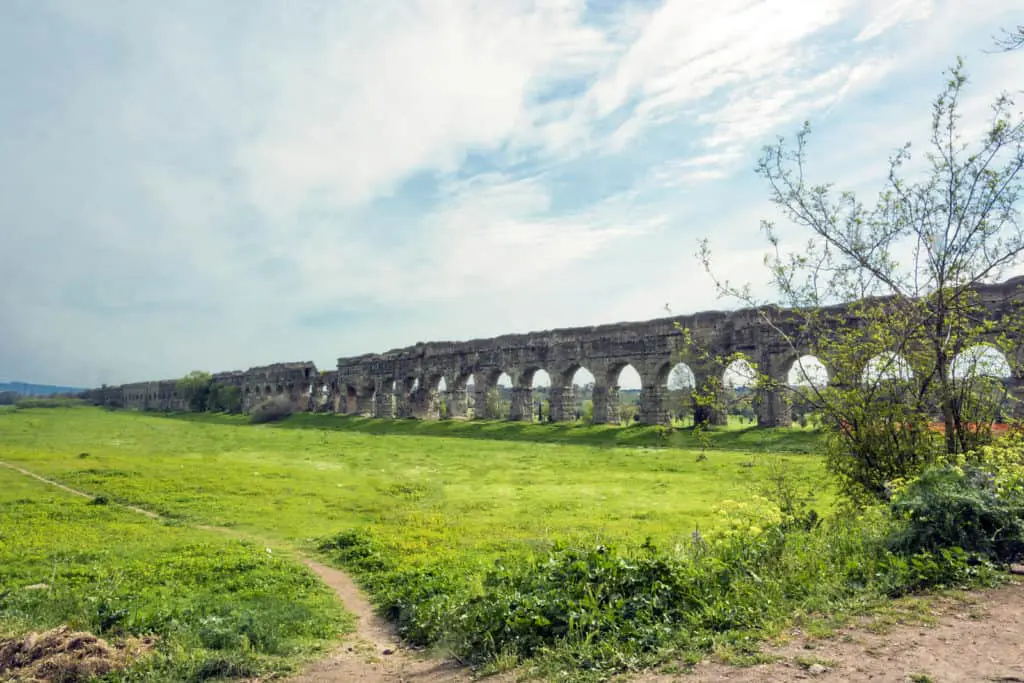
The Appian Way is one of the earliest and most important Roman roads in ancient Rome. It connected Rome to Brindisi in southeast Italy. The road is named after Appius Claudius Caecus, the Roman censor who began and completed the first section as a military road to the south during the Samnite Wars in 312 BC.
Many historical events occurred along the Appian Way, including the crucifixion of Spartacus’ army. In 73 BC, a slave revolt led by Spartacus began against the Romans. The conflict continued for two years, during which Spartacus defeated many Roman armies. While trying to escape from Italy at Brundisium, he unwittingly moved his forces into the historic trap in Apulia/Calabria, pinning his forces between armies. Several thousand rebels that escaped from the battle were captured and killed. In 71 BC, 6,000 slaves were crucified along the 200-kilometer Via Appia from Rome to Capua.
The Appian Way also witnessed battles in 1943, during World War II. The battle lasted four months until the Allies returned to Rome from the Germans.
During the 1960 Summer Olympics, the Appian Way was part of the men’s marathon course.
The Appian Way currently in use is actually a restored version of the old one (Via Appia Antica), which fell out of use. Pope Pius VI ordered its restoration, and a new one, Via Appia Nuova (New Appian Way), was built parallel to the old one in 1784.
The old Appian Way remains a free tourist attraction. The first 5 kilometres are still heavily used by cars, buses, and coaches, but traffic is very light thereafter, and the ruins can be explored on foot in relative safety.
The Church of Domine Quo Vadis takes up the second mile of the road. Moving forward, you’ll find three Roman and early Christian catacombs and one of Jewish origin.
Spend the Day at Caffarella Park
The Caffarella Park (Parco della Caffarella) is large in Rome and is part of the Appian Way Regional Park. The park’s name comes from the Caffarelli family, which operated a farm in the area in the 16th century. It stretches from the Aurelian Wall up to the Via dell’Almone. It contains several important archaeological finds, such as:
The Nymphaeum of Egeria, a spring dating back to the 2nd century AD, was constructed by Herodes Atticus, a Roman senator.
The Valca Tower is an old, well-preserved Temple of the God Rediculus, the god that Romans honoured at the beginning and end of each journey.
The Sacred Wood is a spot on a hill overlooking the valley with good views of the mountains surrounding Rome and the Castelli Romani. According to legend, this is the spot at which Herodes Atticus ordered a sacred wood to be planted.
These are only some of the amazing archaeological sites you’ll find around Rome; there are many more to choose from. You can also have a look at some of the locations that were used to film renowned movies and TV shows like The Passion of the Christ, Gangs of New York, HBO’s Rome, The Life Aquatic, Dino De Laurentiis’ Decameron, Ben-Hur, Cleopatra, and Federico Fellini’s films.
Overall, visiting Rome is an experience that should not be missed, whether to tour its ancient monuments, check out its shopping districts, or taste its marvellous cuisine!




